LG OLED B4 is an exceptionally versatile device in the semi-premium category. For how else could one describe an OLED television that is so well-priced, and whose price, as history shows, will quickly fall? Ideal blacks and contrast are two things that inevitably mesmerise, and we are certain that anyone who has owned a device with this panel will not be able to return to LCD units. The brightness results of the television in HDR content may seem rather low; however, in this case, thanks to this particular panel, they will appear optically much higher. It is worth noting their stability and uniformity in practically every scene. In this case, a minor downside is the brightness of a full-frame shot filled with a large amount of white. However, we do not believe this to be a serious problem, as there are not many such instances anyway. The factory colour reproduction also deserves praise, which in our specimen is very decent, but one cannot help but remember how beneficial calibration has been for the image, allowing the director's intentions to be conveyed fully. LG B4 will be an excellent choice for all kinds of gamers, as well as sports enthusiasts. The former will certainly appreciate the rich support in the form of all the conveniences stemming from the HDMI 2.1 standard. Meanwhile, the latter will benefit from the advanced motion smoothing with multi-step adjustments. And lastly, one cannot overlook the convenience provided by the remote control with a built-in gyroscope, allowing it to function like a mouse. The WebOS system, which we will navigate, is extremely smooth and responsive. It offers a multitude of applications, which will be more than sufficient for the vast majority of users. The heart of the LG B4 television is the advanced Alpha processor, responsible for the smoothness of the image and advanced signal analysis. In summary: who is the LG OLED B4 for? It is the perfect device for those expecting the highest possible image quality within a given budget, but not only that. The LG B4 stands out significantly above its competition at this price point, which cannot offer such high-quality images.
- Matching (Score)
- Our verdict
- TV appearance
- Where to buy
- Contrast and black detail
- HDR effect quality
- Factory color reproduction
- Color reproduction after calibration
- Smoothness of tonal transitions
- Image scaling and smoothness of tonal transitions
- Blur and motion smoothness
- Console compatibility and gaming features
- Input lag
- Compatibility with PC
- Viewing angles
- TV efficiency during daytime
- Details about the matrix
- TV features
- Apps
- Playing files from USB
- Sound
LG 55 B4 vs Samsung The Frame 2025 (LS03F)
Direct compare
B46 / B42 / B43
The Frame / LS03FAU


Panel type: WRGB OLED
Resolution: 3840x2160
System: WebOS
Model year: 2024
Complete the survey to find out the result

Panel type: LCD VA
Resolution: 3840x2160
System: Tizen
Model year: 2025
Complete the survey to find out the result

Overall rating
8.1
7.0
Movies and series in UHD quality
8.1
6.8
Classic TV, YouTube
8.8
6.5
Sports broadcasts (TV and apps)
8.6
6.4
Gaming on console
9.3
8.3
TV as a computer monitor
7.6
8.2
Watching in bright light
5.7
6.3
Utility functions
9.0
8.1
Apps
8.7
8.7
Sound quality
7.1
6.0
Complete the survey to find out what fits your preferences
Advantages
Reference colour mapping after calibration
Very good image compliance with the director's intentions
Excellent compatibility with consoles and PCs
Advanced motion smoothing system
Deep and vivid image
Advanced WebOs system and "mouse" remote control
Matte display excellently reduces reflections
Customisation options for the screen thanks to interchangeable frames + art mode
Free accessories in the form of a wall mount + OneConnect module
High native contrast
Decent brightness
High refresh rate - 120/144Hz
Many features for gamers - VRR, ALLM, Gamebar, proprietary motion smoother working in games
Disadvantages
Visible tonal transitions
Missing HGiG mode – makes precise HDR adjustments on the console difficult.
No DTS support – requires additional hardware for some films on Blu-ray discs.
Paid picture mode
Our verdict
Samsung The Frame 2025 is a television unlike any other – and although competition has emerged for it, it still does it best. The matte panel, flush mounting with the wall, and a single thin cable thanks to the One Connect module make the device resemble a picture more than any other screen. The Art Store app continues to offer the best scans of artworks on the market (even if they are subscription-based), and with interchangeable frames, we can adapt the TV to the interior almost like a piece of furniture. As for the picture itself, since we are also talking about an ordinary television, there are no major changes, but there are also no disappointments compared to last year’s model LS03D. The Frame still offers high native contrast and solid brightness at 600 nits, which combined with the matte finish provides very comfortable daytime use. The colours are not as vibrant as in glossy screens, but against the backdrop of competitive matte constructions, they perform the best. A novelty is the 144 Hz refresh rate, although in practice, mainly PC gamers will benefit from it. Indeed, in terms of gaming features, The Frame has nearly everything: low input lag, variable refresh rate (VRR) support, automatic game mode (ALLM), Game Bar, and a unique motion smoother designed for games. Unfortunately, not everything is as perfect as it might seem. Why? Because the HGiG mode is missing, which has suddenly disappeared from the latest version of the Tizen system. Samsung really should respond to this, as for many gamers it is a key element in choosing a screen. And we fully understand that. Even though LS03F The Frame 2025 does not bring greater revolutions, it is still a unique television that, apart from its appearance, offers quite solid picture quality and extensive gaming features. It’s a pity that year after year we also receive new compromises.
TV appearance




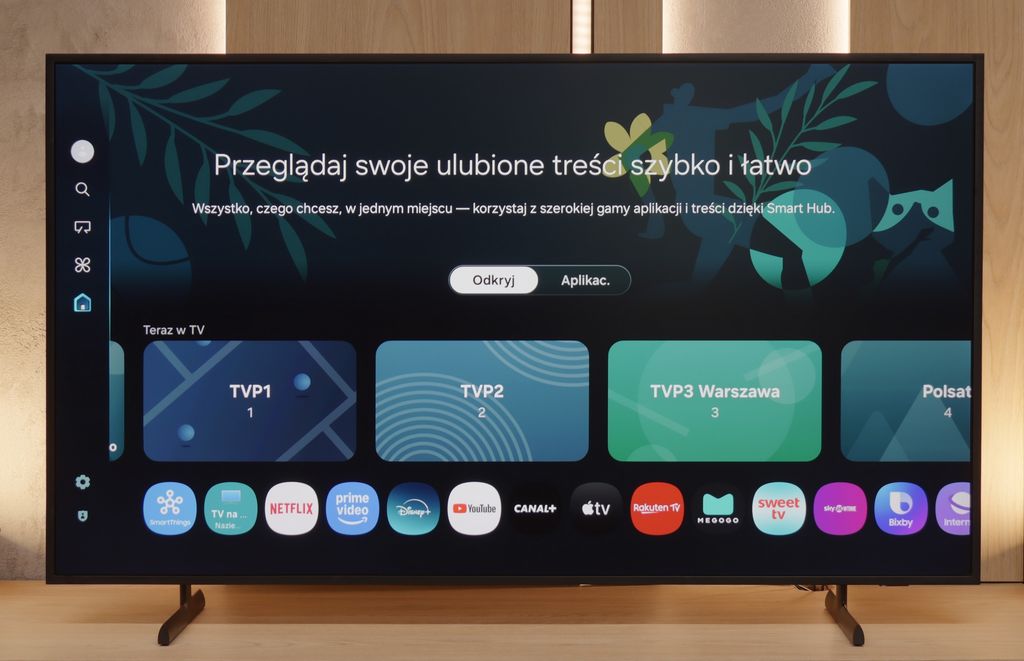
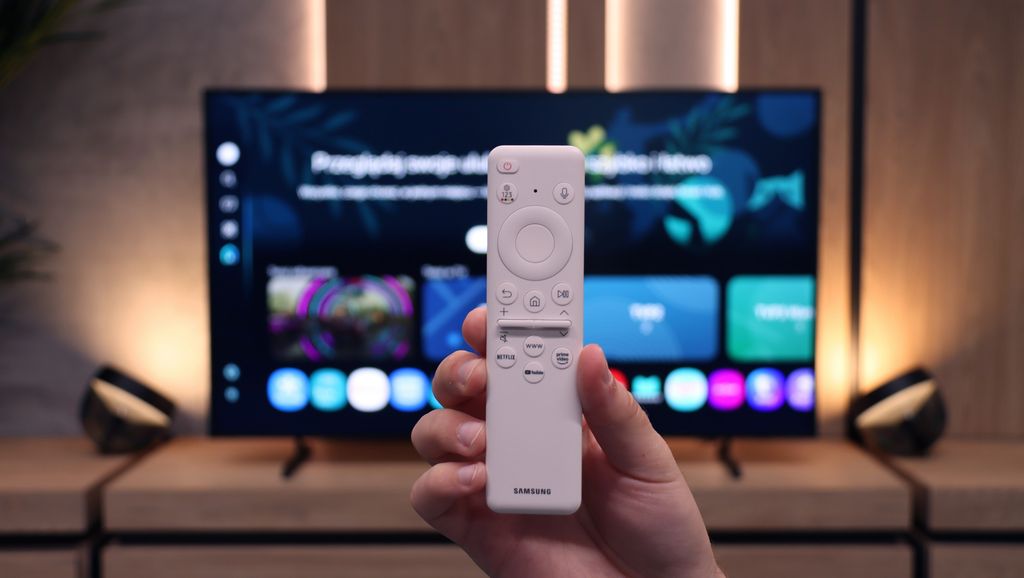
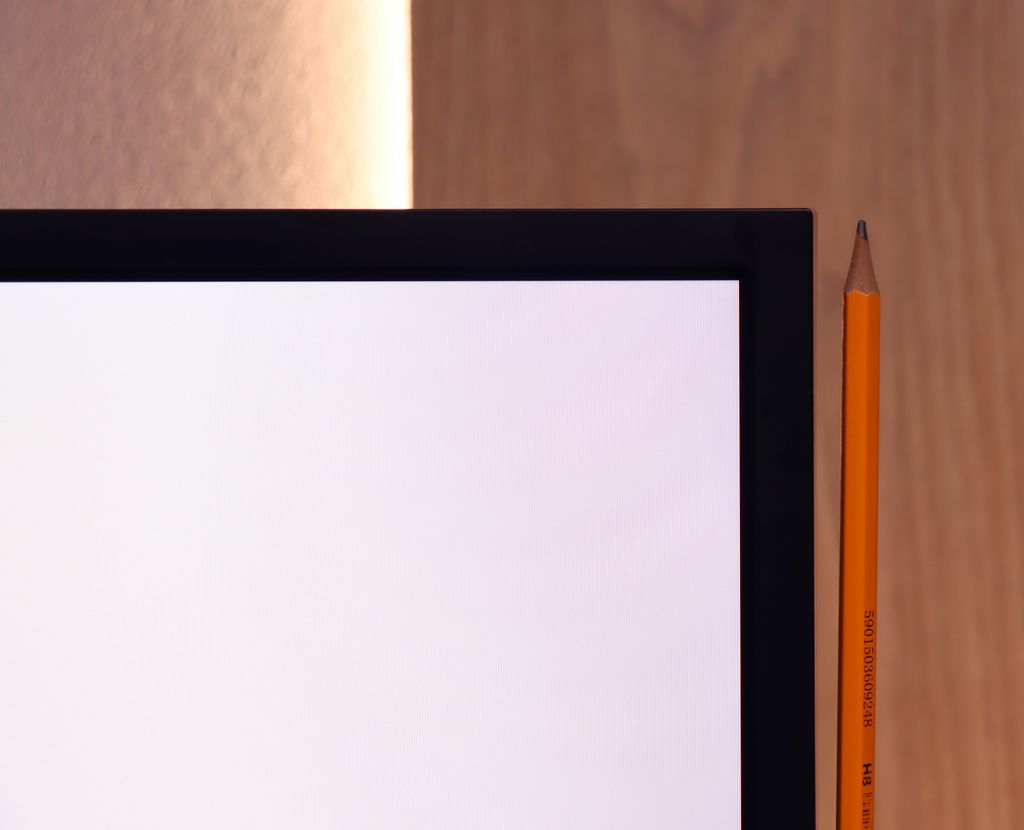
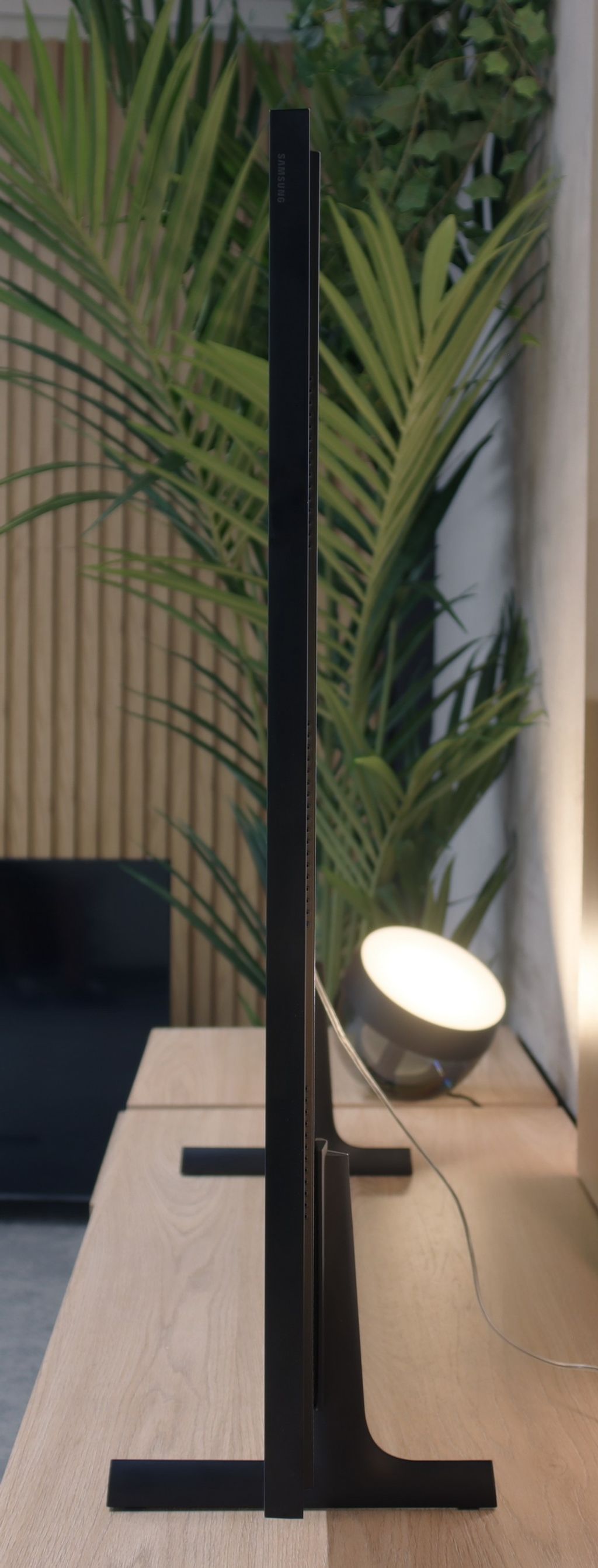
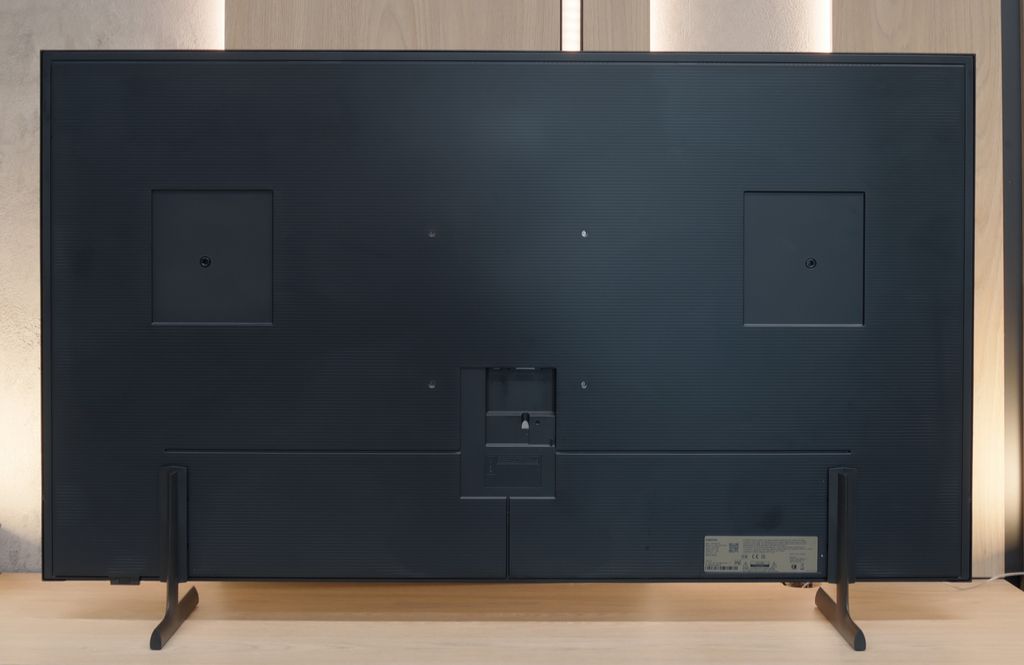
Contrast and black detail
10/10
6/10
Local dimming function: No
Contrast:

Result
∞:1

Result
∞:1

Result
∞:1

Result
∞:1

Result
∞:1

Result
4,800:1

Result
4,750:1

Result
14,900:1

Result
4,500:1

Result
4,300:1
Halo effect and black detail visibility:

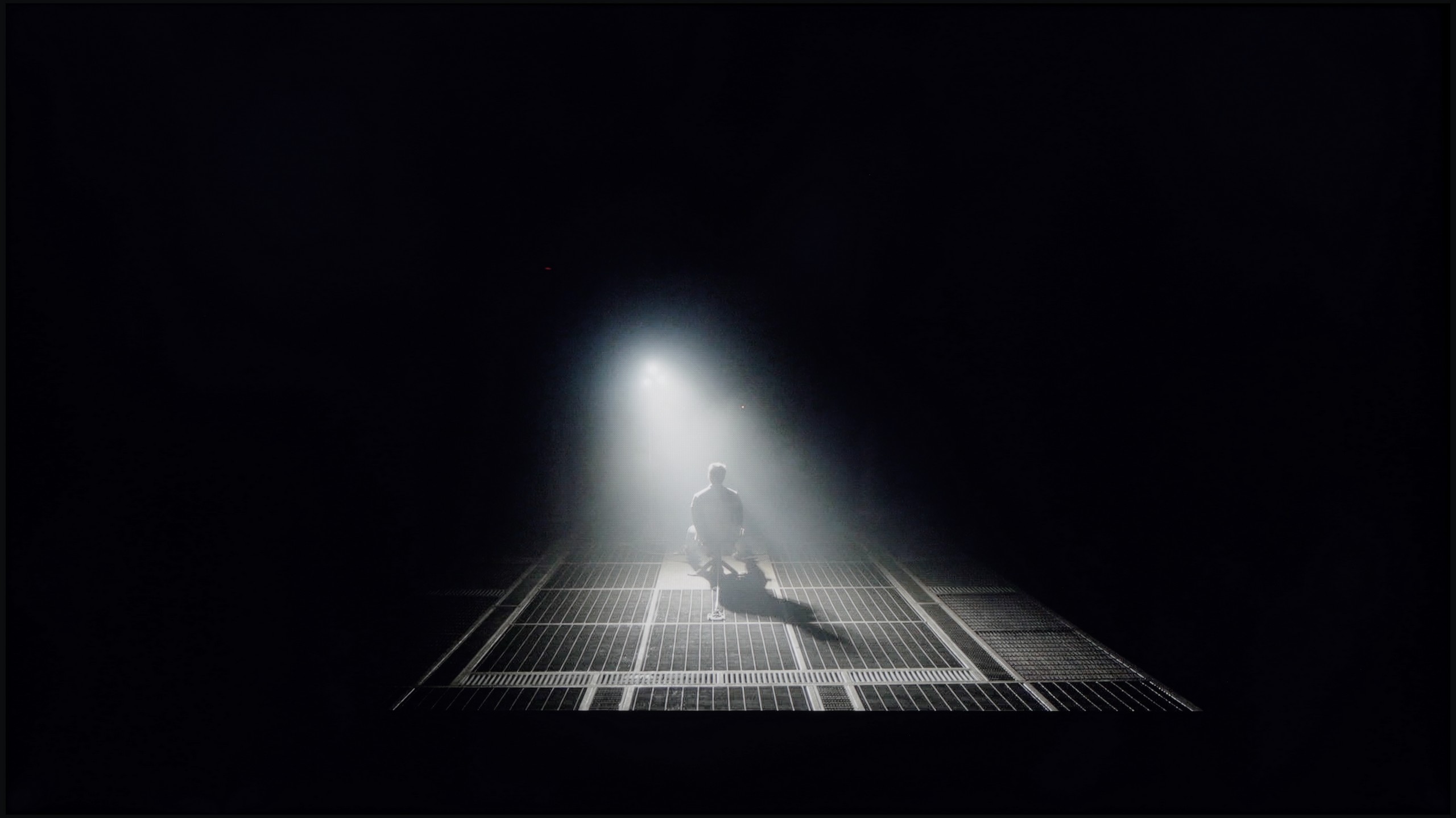
LG B4 uses OLED panels produced by LG Displays. The use of this type of panel provides us with perfect contrast and black levels. With such conditions, the picture is incredibly vivid and one might even get the impression that it is three-dimensional. The series of the manufacturer with the letter "B" has always been an ideal solution for those seeking very good picture quality while not wanting to pay extra for features that are only available in higher series. Therefore, these models have become something of a dark horse in this price range, as their advantageous pricing primarily competes with Mini LED televisions. It is not difficult to say that these models have won these battles due to the absence of characteristic flaws associated with LCD receivers with multi-zone backlighting, such as blooming/halo effects or dimming of images containing fine bright details. And as we can see in the test scenes from the films "Oblivion" and "Sicario 2," the fidelity is at the highest level. Looking at the first one, we see a spectacular play of lights that, despite their brightness, are perfectly separated from one another. Even a more challenging scene with a helicopter poses no problem for LG B4, showcasing a wealth of details and a unique colour grading specific to this title.
The year 2025 promises to be quite interesting when it comes to lifestyle televisions. Why? Because Samsung has prepared two versions of the iconic model The Frame – one standard and the other with the addition of “Pro”. In this review, we take a look at the version without “Pro”, which – as we shall see shortly – is quite significant. The standard model LS03F lacks any local dimming technology, unlike its more expensive sibling. This is important because it affects not only the overall picture quality but, primarily, how this television handles black levels.
The VA panel used in The Frame 2025 has a high native contrast – and this obviously works to its advantage. In the tested film scenes, details in the dark areas of the image were well visible, nothing blended together, and there was no formation of a uniform black/white blob. For the average viewer, this will be more than sufficient. But of course, not everything is perfect. The absence of local dimming means that the black levels on this television are not perfectly deep – they resemble dark navy rather than tar. Additionally, in our tested unit, we noticed slight blooming in the right part of the screen, but this could simply be the “quirk of the specimen” rather than a rule. Theoretically, one could try to improve the perception of black by backlighting the screen – for example, with an LED strip – but in the case of The Frame, this is rather impossible, as this television is meant to sit flush against the wall like a picture. So to achieve a better black visible to our eyes, we are forced to watch the LS03F with the lights on. That’s the charm of this technology.
HDR effect quality
6.3/10
6/10
Luminance measurements in HDR:

Result
664 nit

Result
650 nit

Result
677 nit

Result
662 nit

Result
410 nit

Result
642 nit

Result
589 nit

Result
574 nit

Result
584 nit

Result
631 nit
Scene from the movie “Pan” (about 2800 nits)


Scene from the movie “Billy Lynn” (about 1100 nits)


Static HDR10


Dynamic: Dolby Vision
Dynamic: HDR10+


HDR luminance chart:
Samsung The Frame 2025 (LS03F)
Luminancja HDR
Luminance of RGB colors
LG 55 B4
Luminancja HDR
Luminance of RGB colors
The brightness results in HDR materials for LG B4 are very good. It is true that none of them exceed 1000 nits, although the stability of luminance is excellent and looks practically the same in every scenario. The only moment where the tested television performs worse is the last of the scenes, although this should not be surprising. Large frames filled with a lot of white have always been, and probably will continue to be, somewhat of a weakness for OLED televisions. However, the combination of perfect contrast, black levels, and brightness of LG B4 allows for a full experience of the HDR effect. Additionally, the incredibly high coverage of the DCI-P3 colour gamut deserves recognition, reaching 99%. This makes the colours look incredibly vivid and striking.
The Frame LS03F is a television that can surprise with its brightness. The maximum luminance reaches around 650 nits, which already looks impressive on paper. But as we know, laboratory tests are one thing, and real film scenes are quite another. When watching HDR materials in natural conditions, The Frame 2025 maintains very good results. In most film scenes, the peak brightness remained at around 550–650 nits. This is a sufficient value to feel the difference between standard picture quality and that of HDR – bright highlights, reflections on water, or moonlight are presented clearly and spectacularly.
It is also worth remembering that the LS03F is a QLED television, which translates into solid colour saturation. The coverage of the DCI-P3 colour space reaches about 92%, allowing for vibrant, intense colours in HDR content. This is not the level of top premium models, but for a lifestyle screen, the result truly deserves recognition.
Factory color reproduction
8.4/10
7.1/10


Factory Mode
After calibration

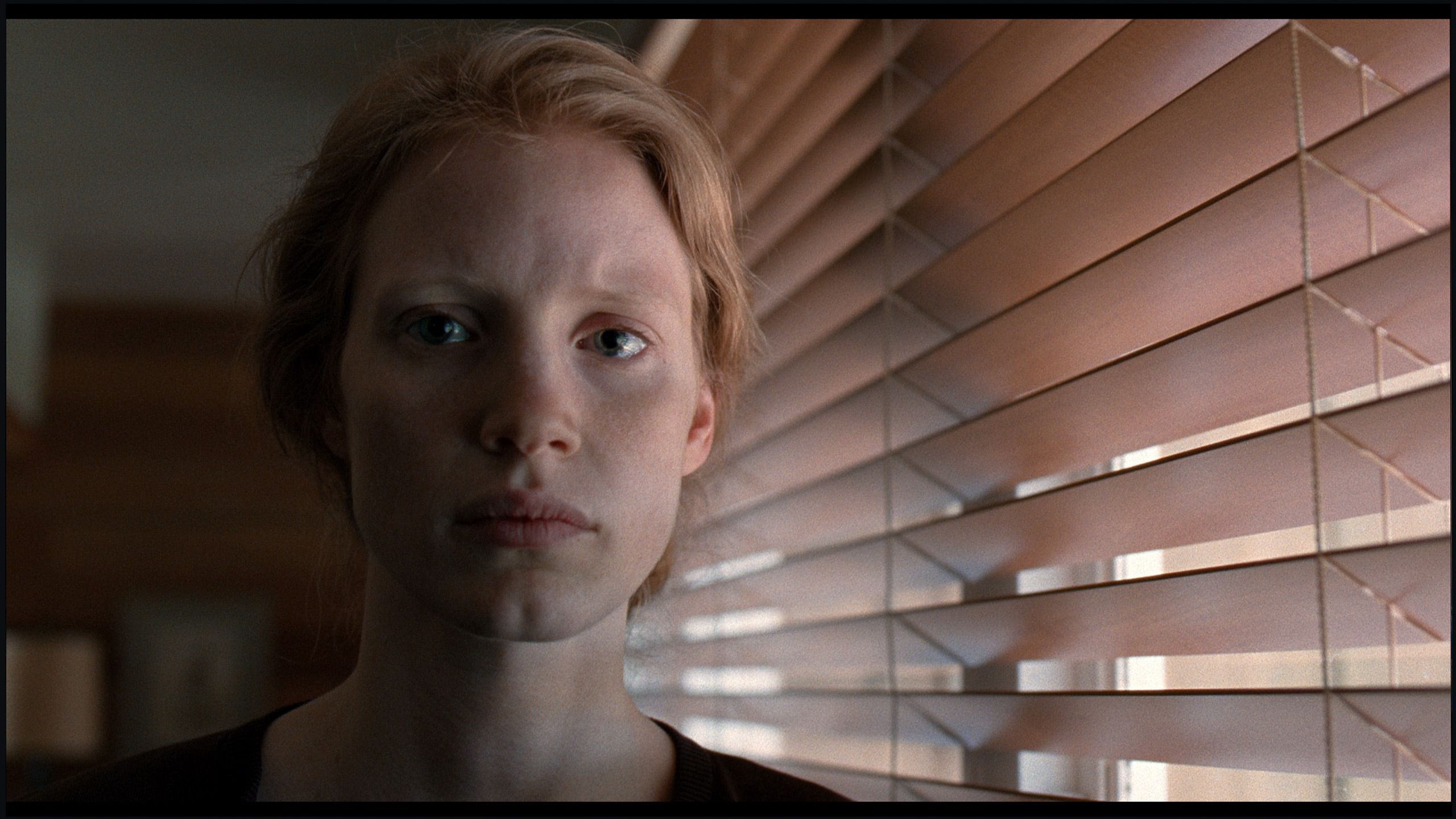
Factory Mode
After calibration
The best factory mode prepared by the manufacturer is "Filmmaker," which is exactly what we used throughout the entire testing procedure. We must admit that the unit we received out of the box had quite good colour reproduction. The biggest problem in both SDR and HDR content turned out to be white balance. In the former, a strong red hue was evident, causing the displayed image to have a pronounced yellow tint, particularly noticeable on skin tones and whites. In higher quality materials, this colour was also accentuated, but due to a lack of blue, there were also signs of green visible. Apart from these issues, we also encountered problems with grayscale and the colours themselves.
When it comes to image quality straight out of the box, even in Filmmaker mode, which is supposed to be the closest to reference, there were issues. We noticed clear deviations in white balance in both HD and 4K HDR content. The image was heavily skewed towards red and blue, giving the screen a characteristic pinkish tint. This effect was most noticeable in bright scenes – for example, in shots with a lot of white, where neutral light should naturally dominate. At such moments, the screen clearly took on pink tones, which is also visible in the attached comparison photo. As for the brightness characteristics – it wasn’t as bad as one might expect with such colour inaccuracies. The analysis of the gamma curve and EOTF showed a slight brightening of the image compared to the reference, but not enough to drastically ruin the viewing experience.
Color reproduction after calibration
9.3/10
8/10

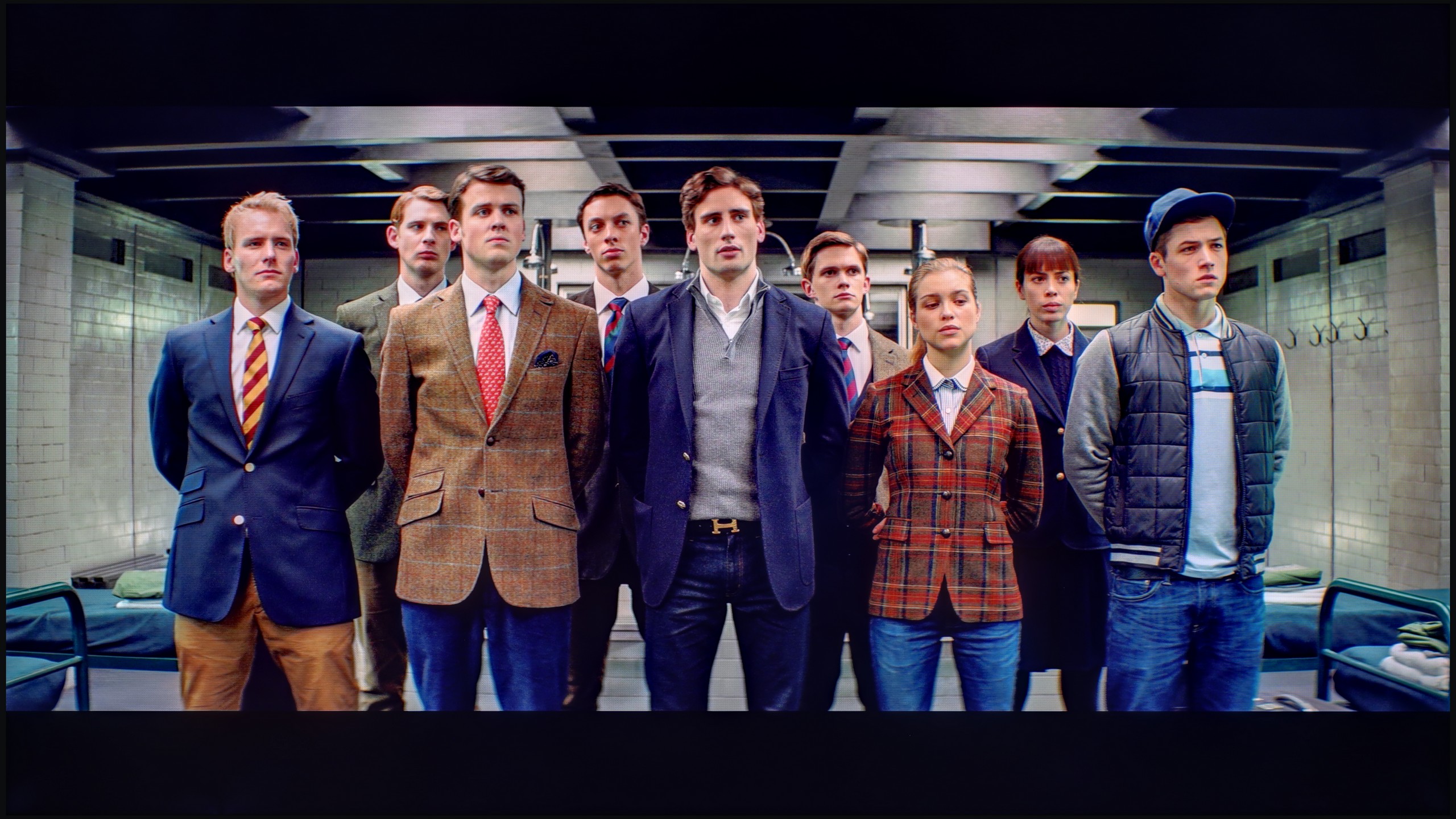

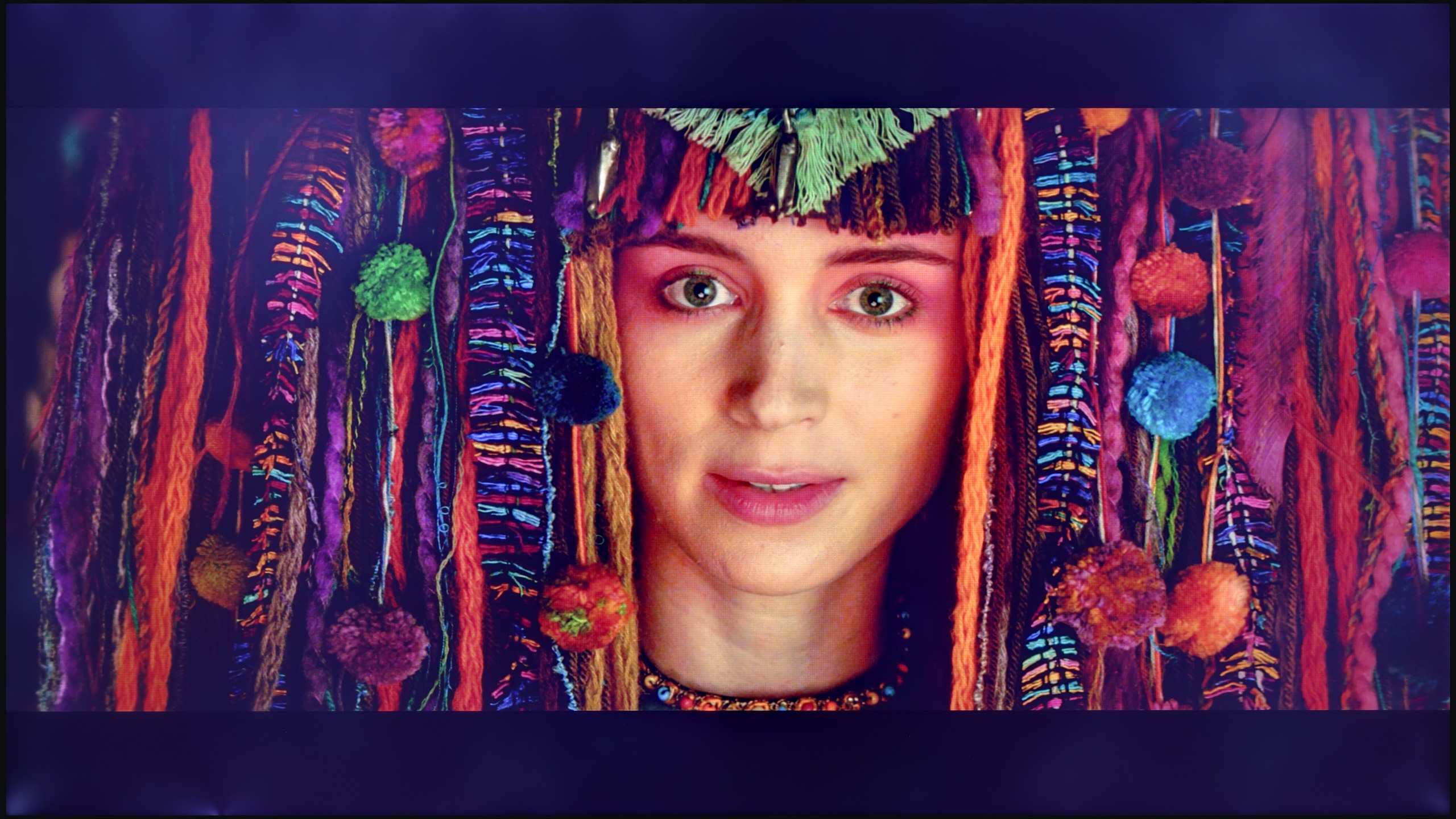
LG B4 has been providing very advanced calibration tools in its televisions for years. We can even say that as the only manufacturer on the market, it allows for such deep intervention in image adjustment. It is thanks to these tools that we were able to calibrate the device so well. Evidence of this is the extremely low deltaE errors, which can be said to be at a reference level. Both SDR and HDR materials now look exactly as intended by the film director. It is no coincidence that televisions of this brand are most often used as preview screens for various graphic or post-production studios.
After calibration, the movie mode has gained a completely new quality. The issue of the pink tint, which had been clearly visible before, especially in bright scenes, has been effectively eliminated. Colours now look much more natural, and the white balance no longer dominates the rest of the image. It is no longer the same exaggerated "box picture" – everything now has coherence and a cinematic character. Additionally, the tendency of the television to slightly brighten scenes, previously visible in the EOTF curve analysis, has been partially corrected. Of course, this is within the limits of what the design allows without local dimming – one cannot speak of perfect brightness management here. Nevertheless, the final effect was definitely closer to what one might expect from a mode called Filmmaker.
Smoothness of tonal transitions
7.4/10
9/10

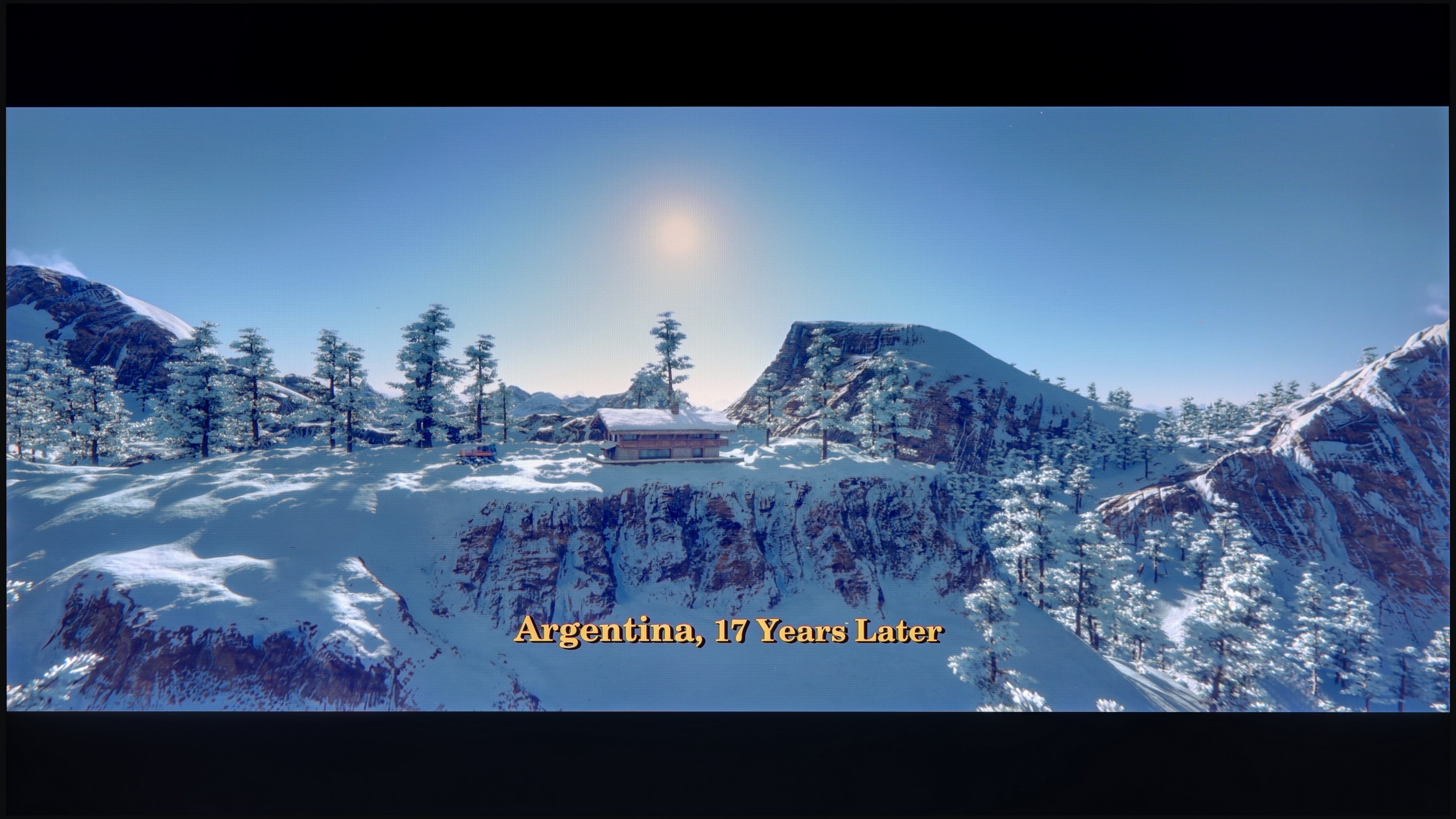



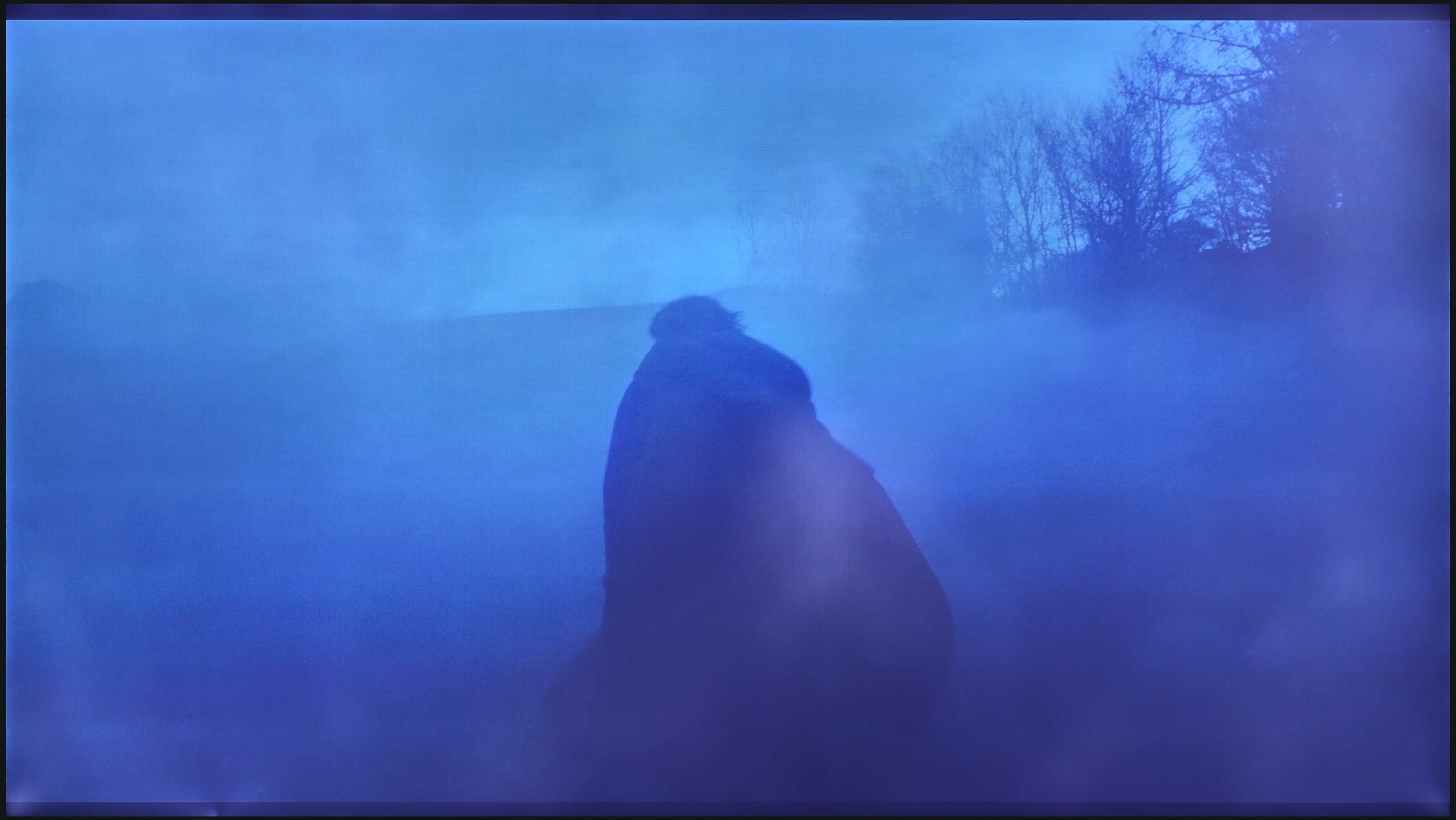




The fluidity of tonal transitions, often overlooked in various tests on competing portals, is an equally important aspect of image quality assessment. It is particularly important when watching material that features a wealth of colours and many intricate effects, where textures blend. This often leads to the so-called banding of colours, which is a lack of smooth gradation. The tested television handles tonal transition smoothing quite well. However, it is worth noting that it has its weaker moments, such as a bright coloured sky in the film "Kingsman" or "The Martian". Nevertheless, these are not aspects that detract from the viewing pleasure. Therefore, we positively assess the quality of tonal transitions in LG B4.
In terms of the smoothness of tonal transitions, the LS03F maintains a high standard – just like last year’s models. The television did not encounter any issues when testing more challenging film scenes, where noticeable transitions between shades of colour can easily occur. The colour gradation is very good here – both in the lighter and darker areas of the image. We did not observe the typical banding effect or other disturbances that could be distracting while watching films. If we were to nitpick, in the most demanding scenes – with subtle transitions and delicate gradients – minor imperfections can be detected. But only if one approaches the screen very closely and begins to analyse the image from a distance not intended by the manufacturer.
Image scaling and smoothness of tonal transitions
7.9/10
6.7/10
Smooth transition function

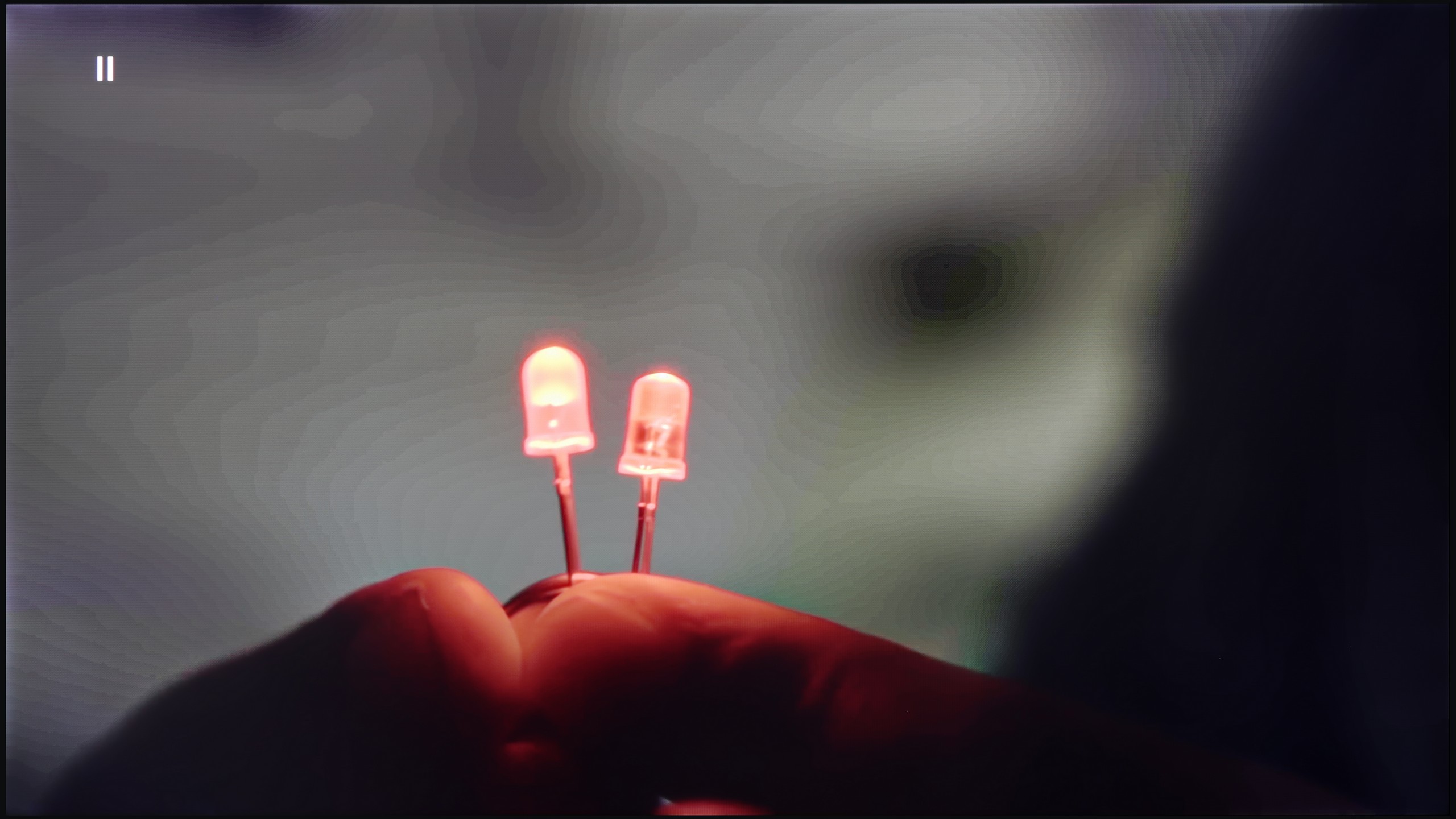
Image without overscan on the SD signal

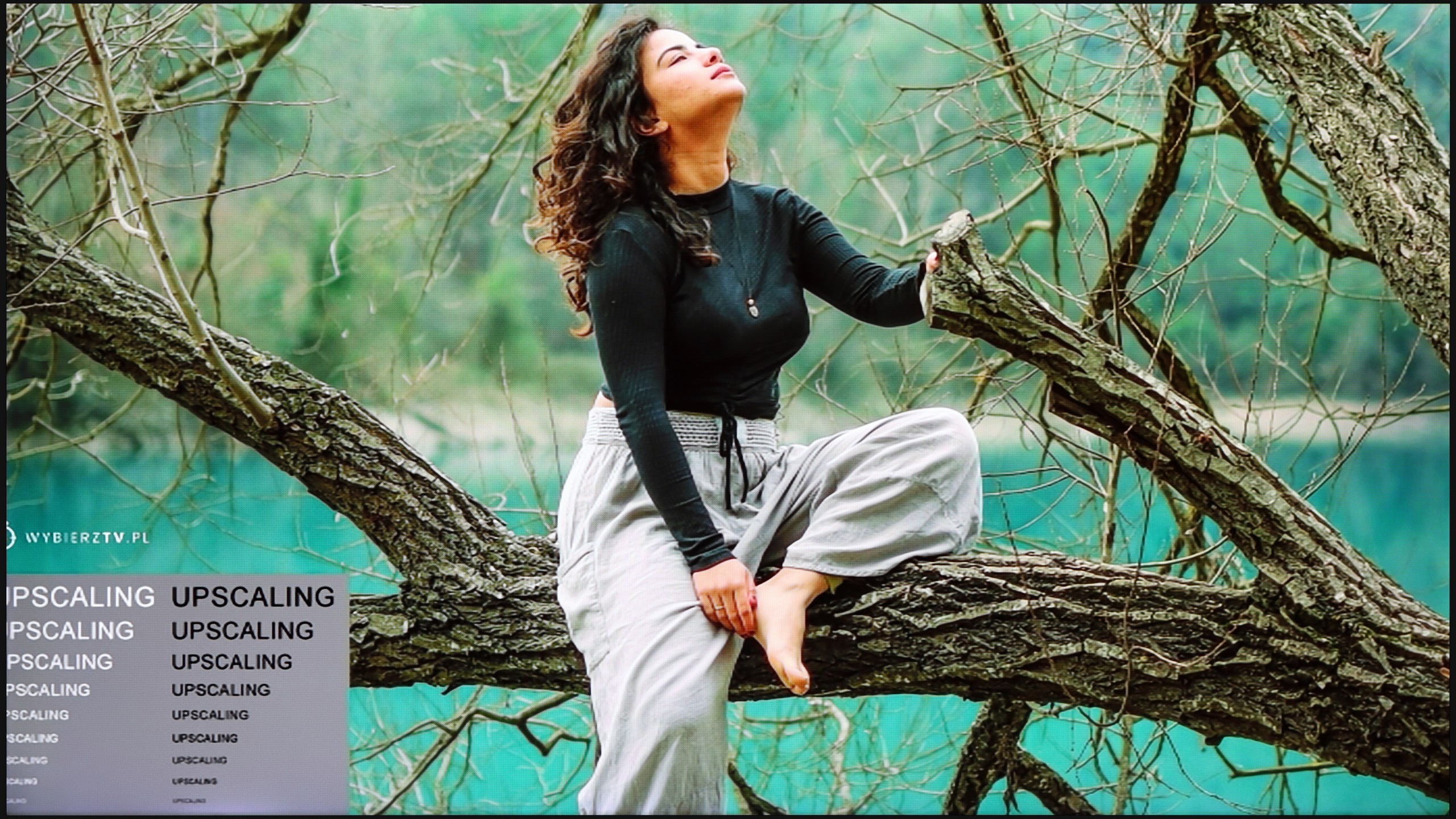
In this paragraph, we will take another look at the function for smoothing tonal transitions, but we will also check how the television handles lower quality material. As we have managed to verify, the setting responsible for smooth gradation works quite efficiently, although it has its weaker moments. Just as the function works correctly in SDR content, it becomes rather useless in HDR content. Even at the lowest of the options, it blurs essential details, which is why we advise against using it.
The image scaling on LG B4 is rated rather moderately positively. Although there is no edge doubling, the image itself is naturally "soft." We can change this by adjusting the sharpness slider.
LS03F has been equipped with the NQ4 processor, which is responsible for improving image quality – particularly in lower quality materials. In practice, this works surprisingly well, especially when it comes to older content and recordings with lower resolution. Activating the "noise reduction" function yields noticeable effects. The TV effectively smooths tonal transitions and removes digital noise that can appear in darker areas of the image. Compared to previous generations, there is a clear advancement – previously, this function often smoothed everything too much, including details that it shouldn't remove. In this year's model, smoothing still occurs, but in a much more acceptable manner. Textures of materials, skin, and fabric details are no longer subdued as strongly as before – the image retains more naturalness. However, this does not change the fact that film grain is still removed by the TV, which may not appeal to everyone. On the other hand, it is no longer as aggressive an intervention as in previous models. It is also worth mentioning that the LS03F may struggle with very weak signals – for example, from VHS tape recordings or low-resolution video. In such cases, we noticed slight clipping of the image at the edges – so-called overscan. This can lead to a situation where a small part of the image (e.g., subtitles at the bottom edge) gets cut off.
Blur and motion smoothness
8.5/10
6.9/10

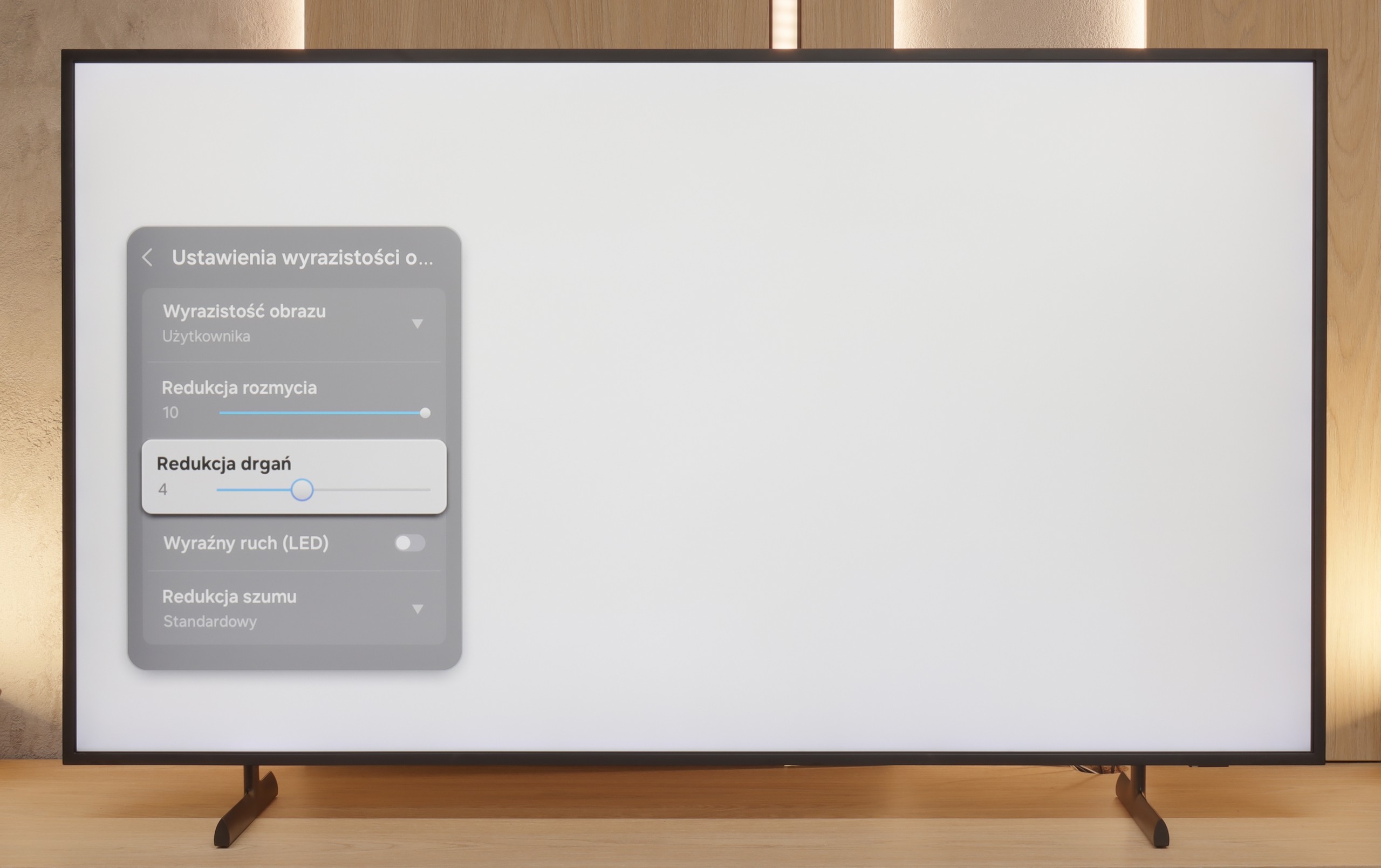
Blur (native resolution, maximum refresh rate):



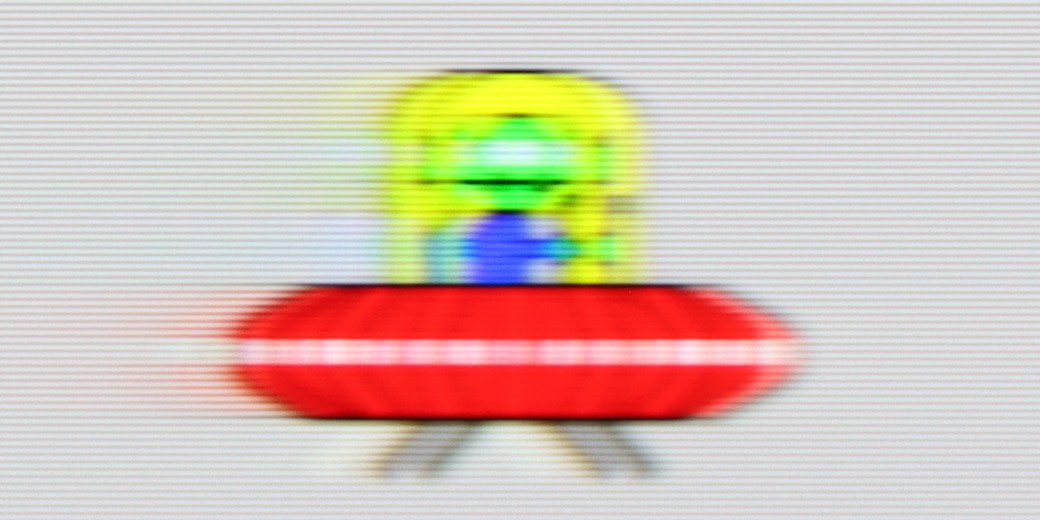
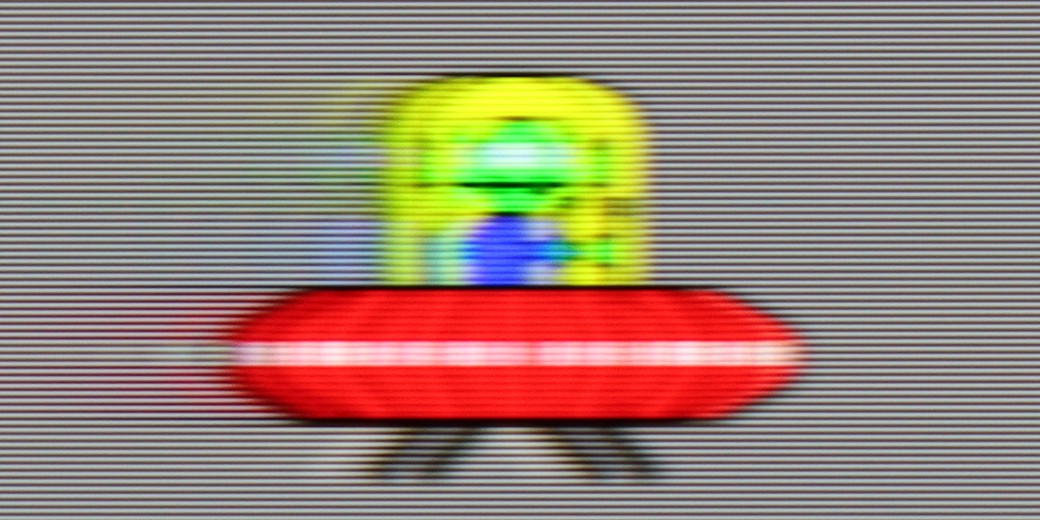

Blur (BFI function enabled):



Image flickers in this mode



The maximum refresh rate that we can set on the LG B4 is 120 Hz. This is the absolute minimum for those requiring high image fluidity. The manufacturer has implemented a multi-step motion smoother called "TruMotion". It has been divided into two separate sliders adjusting the sharpness of moving images (De-Blur) and jitter (De-Judder). Both sliders can be set in the range from 0 to 10, with each degree affecting the level of fluidity, so everyone can find their golden mean.
The LG OLED B4 panel features an average response time of 0.1 ms (which directly results from our measurements), allowing for an incredibly clear image, unattainable for LCD televisions, whose response times can be as high as several milliseconds. This is clearly evident in the pictures from the "UFO Test", showing no trail following the object.
The new feature in The Frame for 2025 is a display with a refresh rate of 144 Hz. Yes – in a television that is mainly associated with displaying works of art, you can now not only watch Van Gogh but also comfortably play on a console or follow dynamic sports events. This is a definite step towards greater versatility. In the case of Samsung films, as usual in models with a display rate of 120 Hz and above, it allows you to adjust motion smoothness according to your preferences. You can set a more cinematic reproduction while maintaining frame rate or opt for full motion smoothing. The range of options is broad, allowing you to tailor the effect to your own taste – whether the viewing experience is meant to resemble classic cinema or a show on a modern theatre screen.
*this part of the test refers to the LS03FAU model in sizes 55 and 65 inches, which is equipped with a 144Hz panel, while sizes 43 and 50 inches have 60Hz displays, and thus perform much worse in terms of motion smoothness.
Console compatibility and gaming features
10/10
8.1/10
- ALLM
- VRR
- VRR range40 - 120Hz48 - 144Hz
- Dolby Vision Game Mode
- Correct implementation of HGIG
- 1080p@120Hz
- 1440p@120Hz
- 4K@120Hz
- Game bar

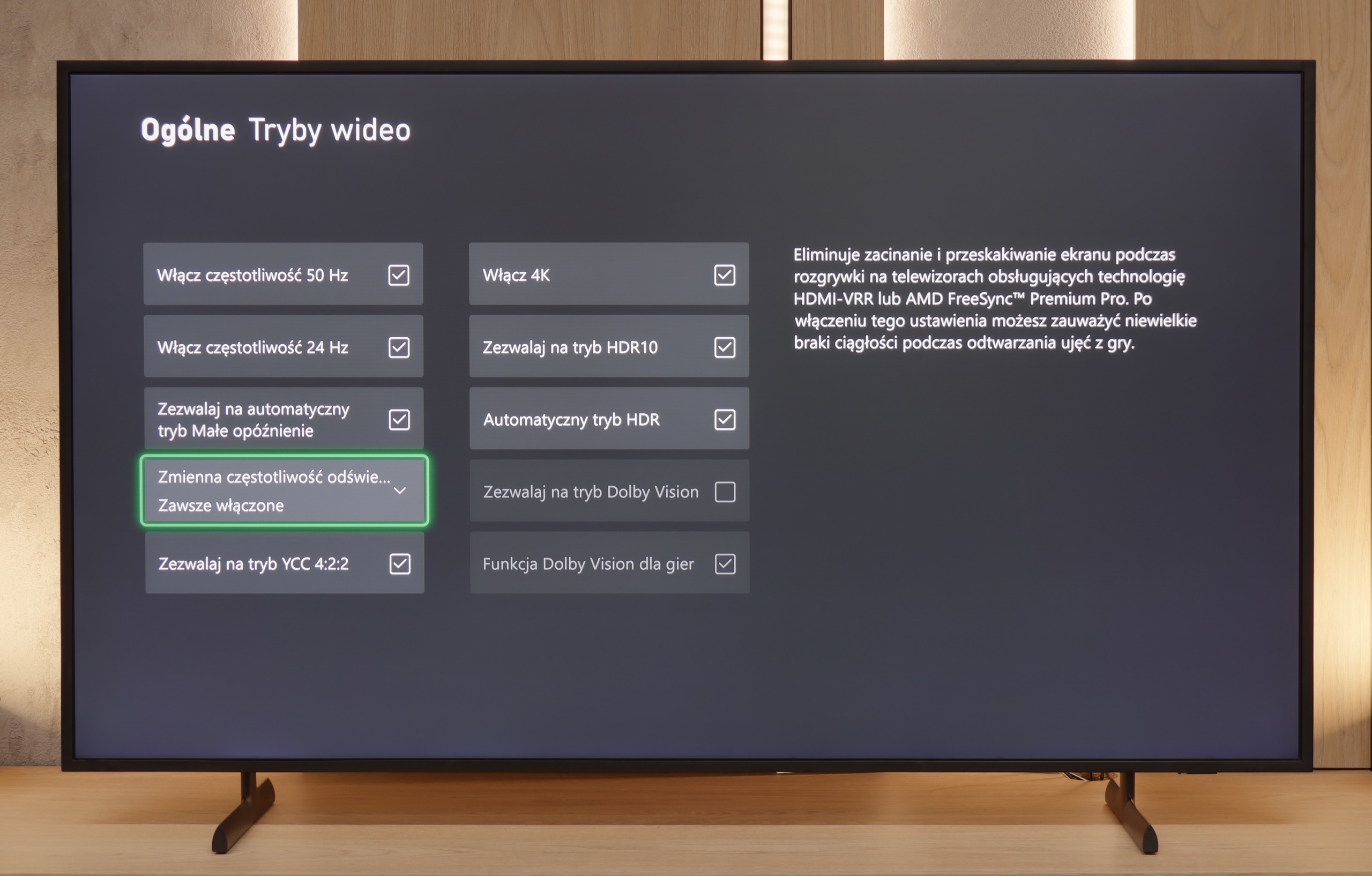

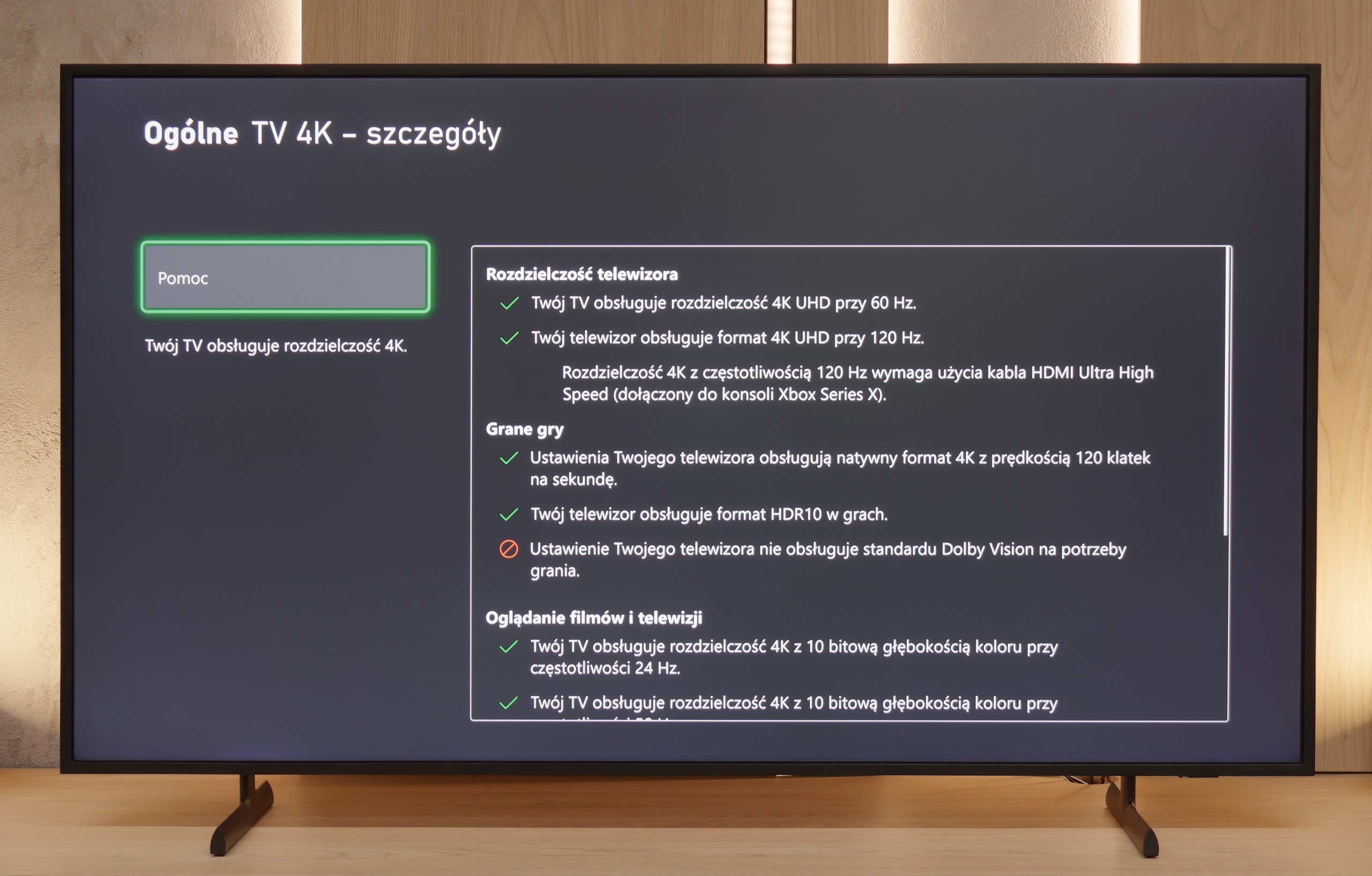



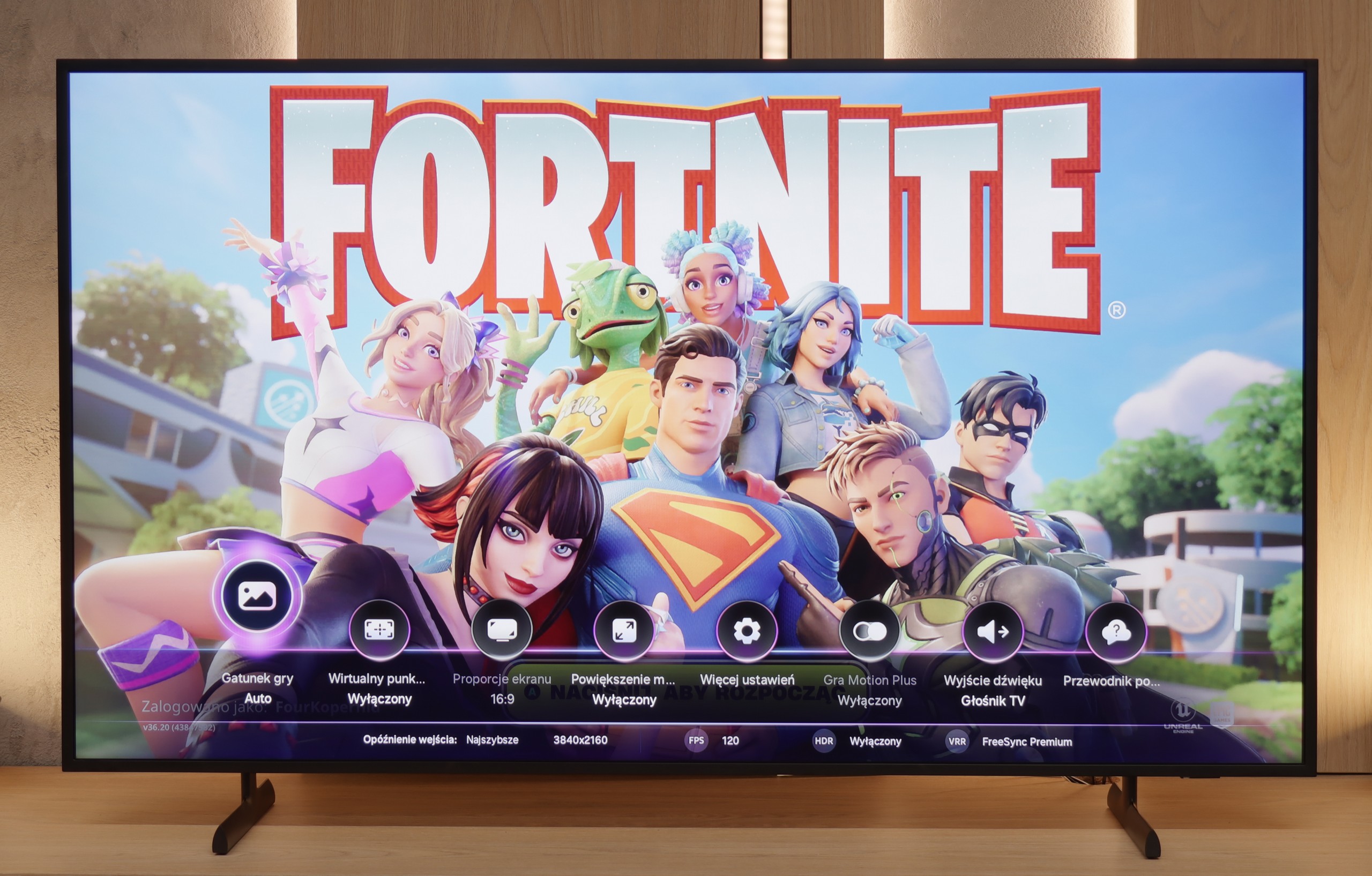
The LG B4 television is equipped with four fully-fledged HDMI 2.1 ports with a full bandwidth of 48Gbps. All features that are identical to this standard were activated without any issues, and throughout the entire testing process, they did not cause any problems. The combination of such extensive functionality and low input lag suggests that the tested television is truly made for gaming. This is not surprising, considering that the manufacturer has always placed great emphasis on this. Therefore, we can enjoy both the properly implemented HGIG mode and gaming in Dolby Vision with low latency. This pairing will certainly attract the attention of all passionate gamers for whom quality is paramount.
An additional standard in televisions from this Korean manufacturer is the implementation of GameBar, allowing for quick adjustment of settings "on the fly," without the need to exit the game. It also enables image adjustments for individuals with visual impairments, which is a very nice touch. Another important piece of information is that when VRR technology is enabled, we will not experience a drop in contrast. This is thanks to the construction of the panel and the lack of conventional backlighting. However, it is normal for shades of grey to flicker slightly; nevertheless, this is a characteristic feature of this function regardless of the manufacturer or television.
In summary: the LG B4, like all of the manufacturer’s OLEDs equipped with 120Hz panels and HDMI 2.1 ports, creates a harmonious whole with the console. In practice, this is a comprehensive television, and if we expect the highest possible efficiency in gaming, B4 will be the ideal choice.
As we mentioned earlier – although The Frame is likely to display images and works of art most of the time, Samsung recognised that a Van Gogh enthusiast could just as easily be an avid gamer. And it must be admitted that The Frame 2025 has almost everything needed to become a full-fledged gaming television.
On board, we find support for ALLM (Automatic Low Latency Mode) and Variable Refresh Rate (VRR) thanks to the implementation of one HDMI 2.1 port. The television handles lower resolutions at higher refresh rates effortlessly and features an advanced Game Bar – already known from other Samsung models – which allows for a quick preview and change of the most important gaming-related settings. For this, it earns extra points from us. The proprietary motion smoother Auto Motion Plus Game is also worth mentioning, which – it is worth emphasising – operates without increasing input lag. Samsung remains the only manufacturer that has managed to implement this feature in a practically invisible manner in terms of delays. The effect? Much better fluidity in games, especially those that struggle to maintain a stable 60 frames per second. This solution can realistically improve the gaming experience in more demanding titles – particularly on consoles, which do not always manage full fluidity, especially in AAA games.
As for the downsides – the lack of Dolby Vision is already considered standard in Samsung televisions, so there is not much to particularly criticise here. However, there is a different issue entirely. In the latest version of the Tizen system, the HGiG option has disappeared. Literally – it is not there. This is a significant hindrance when configuring the console for proper HDR content display in games. It is hard to understand why such a decision was made, but one thing is certain – this should be fixed as soon as possible. We are talking about a brand that has set standards for gaming on televisions for years. If HGiG returns – and we hope it will – The Frame LS03F can confidently aspire to be called a genuine gaming television. Not just as a decoration on the wall, but as equipment that truly provides joy in gaming.
Input lag
10/10
10/10
SDR
HDR
Dolby Vision
Input lag for the LG B4 is at an incredibly low level in every scenario. Even the most dedicated gamers will certainly appreciate the very low input lag at demanding 4K 120 Hz settings with HDR, which is just 5 ms. It is also worth noting that the lag at these same settings, but with Dolby Vision HDR enabled, remains consistent, which is not as evident with the competition. Therefore, it deserves the highest rating and recommendation.
In terms of input lag, Samsung maintains a high level – and a very high one at that. The LS03F, like most of this year's models from the brand, achieves a score of 8 ms for 4K content, which is practically a reference value. This result allows for gaming even in the most dynamic titles without delays and with full responsiveness. Well done!
Compatibility with PC
7.6/10
8.2/10


LG B4 combined with a PC performs excellently, thanks to a very low latency of just 13.5 ms, which is practically an instant response between the mouse, the eye, and the screen. An extremely important factor when working on a screen is primarily the readability of the text, which in the case of the tested television is very good. However, it is worth noting that to achieve sharp fonts, one must enable the passthrough option in the settings.
The RWBG pixel layout has no significant impact on the display of fonts or letters, which provides a considerable advantage over Samsung's QD-OLED matrices. Users of both Windows and macOS equipped computers are sure to be pleased with the performance on the screen of the tested television.
The collaboration of The Frame 2025 with a computer is not a significant problem. Let's start with gaming, as this is where this model demonstrates its strengths – support for 144 Hz signal, low input lag, and compatibility with G-Sync technology (for NVIDIA cards) make it hard not to regard it as a fully-fledged gaming monitor. It is one of the more interesting "PC gaming" televisions available on the market in this category.
When it comes to everyday work, the situation looks equally good. The Frame handles chroma 4:4:4 without any issues, resulting in good font readability and overall user comfort. We only noticed minor problems with dimming very thin lines and dark details on a light background – this effect may occur especially when working with small interface elements. However, in practice, with a 55-inch diagonal screen and standard office working distance, it will be difficult to realistically notice this problem. Nonetheless, it is worth keeping this in mind if the television is to serve as a monitor not only for entertainment but also for precise work with graphics or text.
Viewing angles
7.4/10
3.5/10
The undisputed advantage of OLED panels is their performance in the context of group viewing, that is, from various angles. LG B4 maintains very good contrast, colour saturation, and fidelity. Although this is not the result of organic televisions supported by MLA technology, one cannot say that anyone who purchased the device was dissatisfied with the results obtained. However, it should be noted that at sharp angles, a slight greenish tint can be observed. This is a characteristic feature of LG's WRGB panels, without the aforementioned micro-lens technology, and unfortunately, there is nothing that can be done about it.
As could be expected from a VA panel, the viewing angles on The Frame 2025 are at best mediocre. The image loses saturation and contrast when moved off-axis. It's a pity because we are talking about a model that displays digital artworks in standby mode – and it is precisely in such moments that wide viewing angles would make the most sense, enhancing the experience of engaging with a real image rather than just its screen imitation.
Perhaps in the future, manufacturers will decide to introduce special coatings or modified versions of VA panels that improve this aspect – because for lifestyle televisions, it would have real significance not only in terms of functionality but also aesthetics.
TV efficiency during daytime
5.7/10
6.3/10

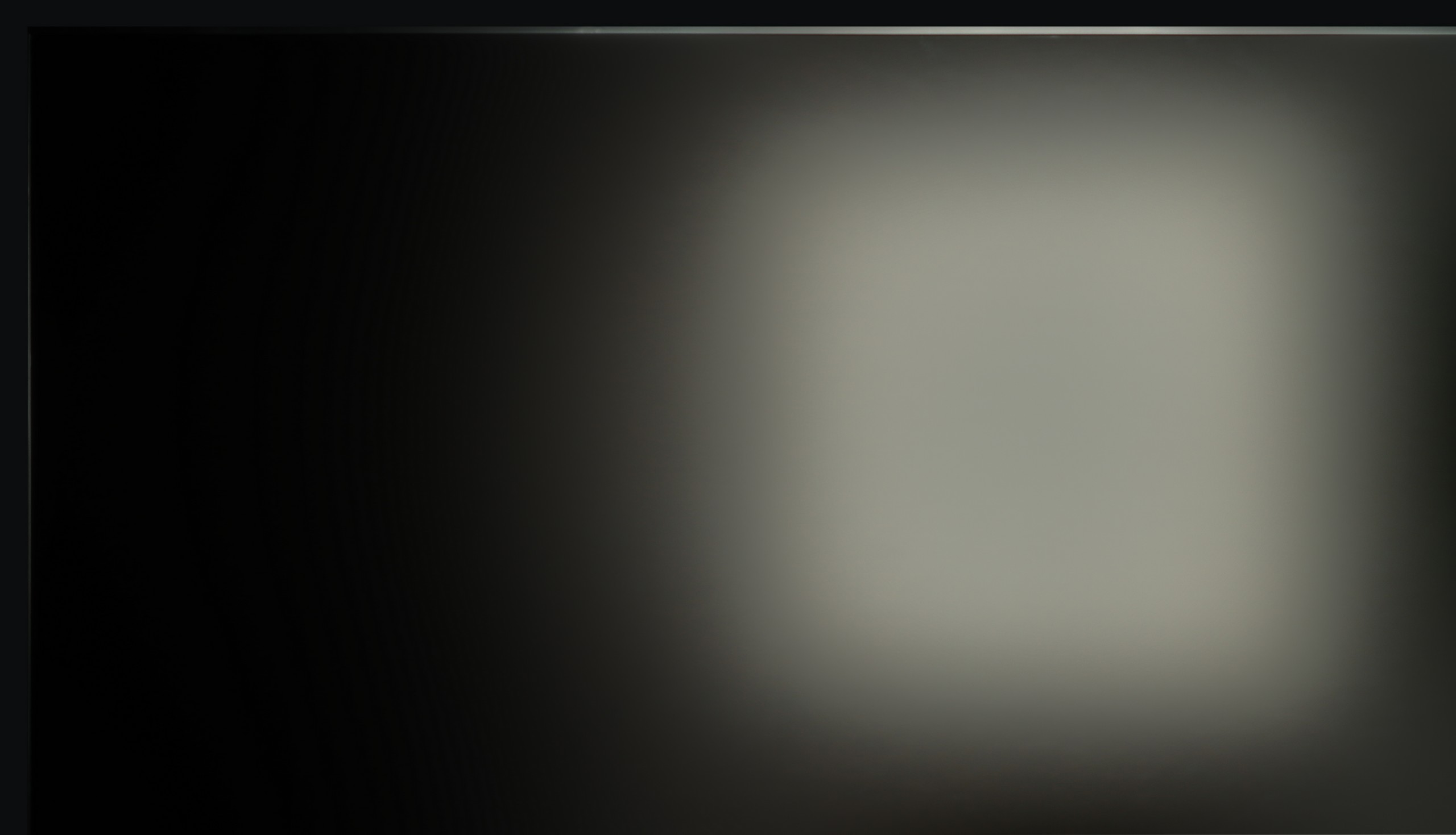


Matrix brightness
Average luminance SDR
Samsung The Frame 2025 (LS03F): 596 cd/m2
LG 55 B4: 374 cd/m2
The maximum brightness of the television in SDR materials is 370 nits. For an OLED television, this is a very good result and allows for quite comfortable viewing during the day. It is worth paying attention to two things. The first is the rather mediocre handling of reflections caused by the satin finish of the panel, which means that direct light hitting the television will be quite obtrusive. The second issue is the brightness of the screen when filled 100% with white, oscillating around 260 nits, which is an excellent result, as until recently, OLED televisions in this price range could "boast" a brightness twice as low. Thanks to this, the conditions for watching, for example, winter sports will be very good.
One of the most characteristic elements of The Frame is its matte display – and it must be said that Samsung has really refined this aspect. From our experience, it is one of the best solutions for suppressing light reflections, especially direct ones. If screen reflections can be irritating, it will be difficult to find a better display in this budget than the matte panel used in Samsung TVs. Of course, this comes with a certain compromise. In very bright sunlight, colours may appear slightly washed out, and the image loses a bit of depth. However, it is something we consciously accept when choosing a matte screen – something for something. In practice, the colours and contrast on Samsung's matte screen are still better than on Chinese designs such as the TCL NXT Vision or Hisense Canvas TV. If effective suppression of reflections and the desire to use the television also as a "digital picture" in bright rooms is a priority, then there is hardly a better choice.
The Frame achieves around 600 nits of brightness, which combined with the matte finish allows the television to perform well in brightly lit daytime conditions. It may not be at the level of flagship models, but in everyday use – in a living room with plenty of light – it handles it without any problems.
Details about the matrix
Subpixel Structure:
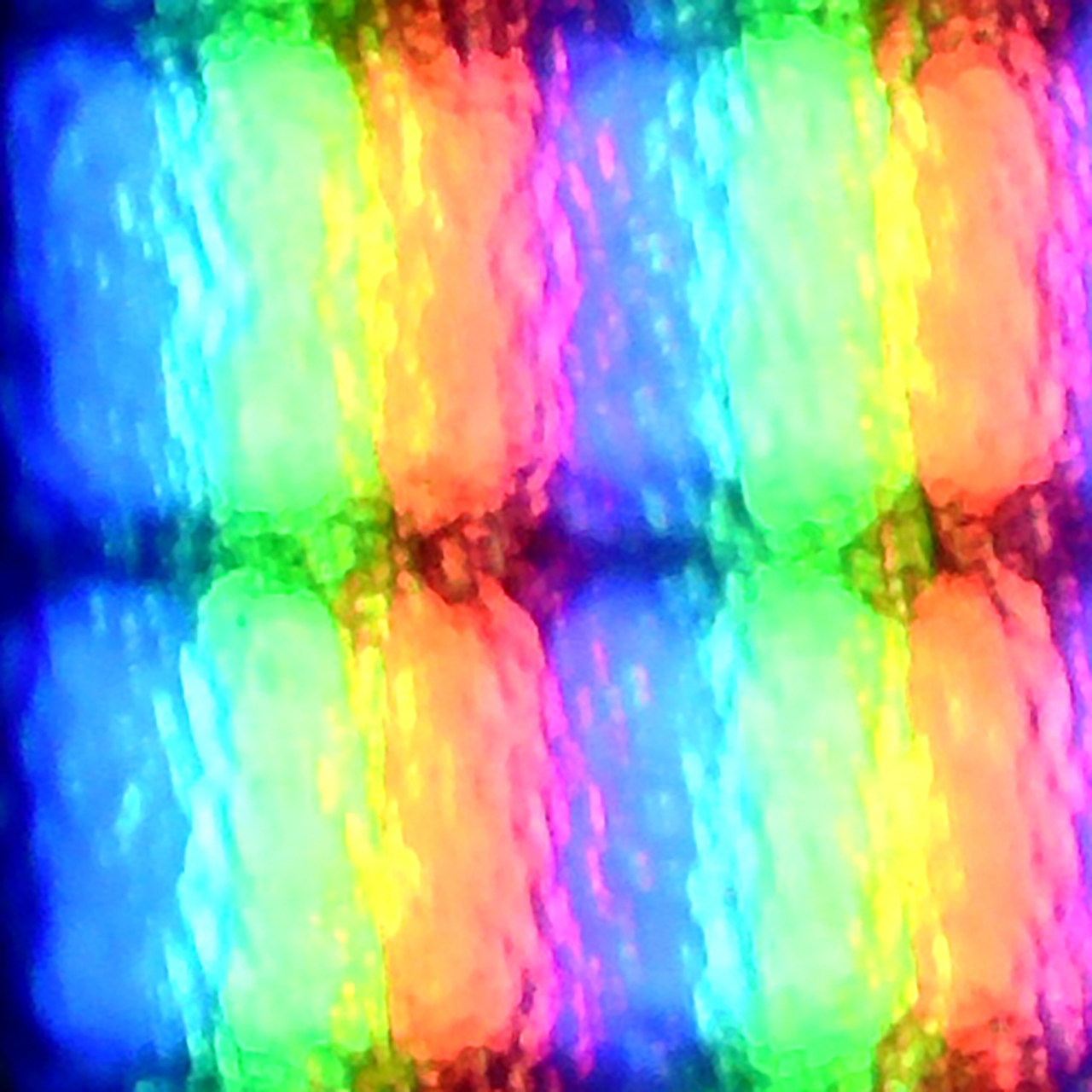
Panel uniformity:

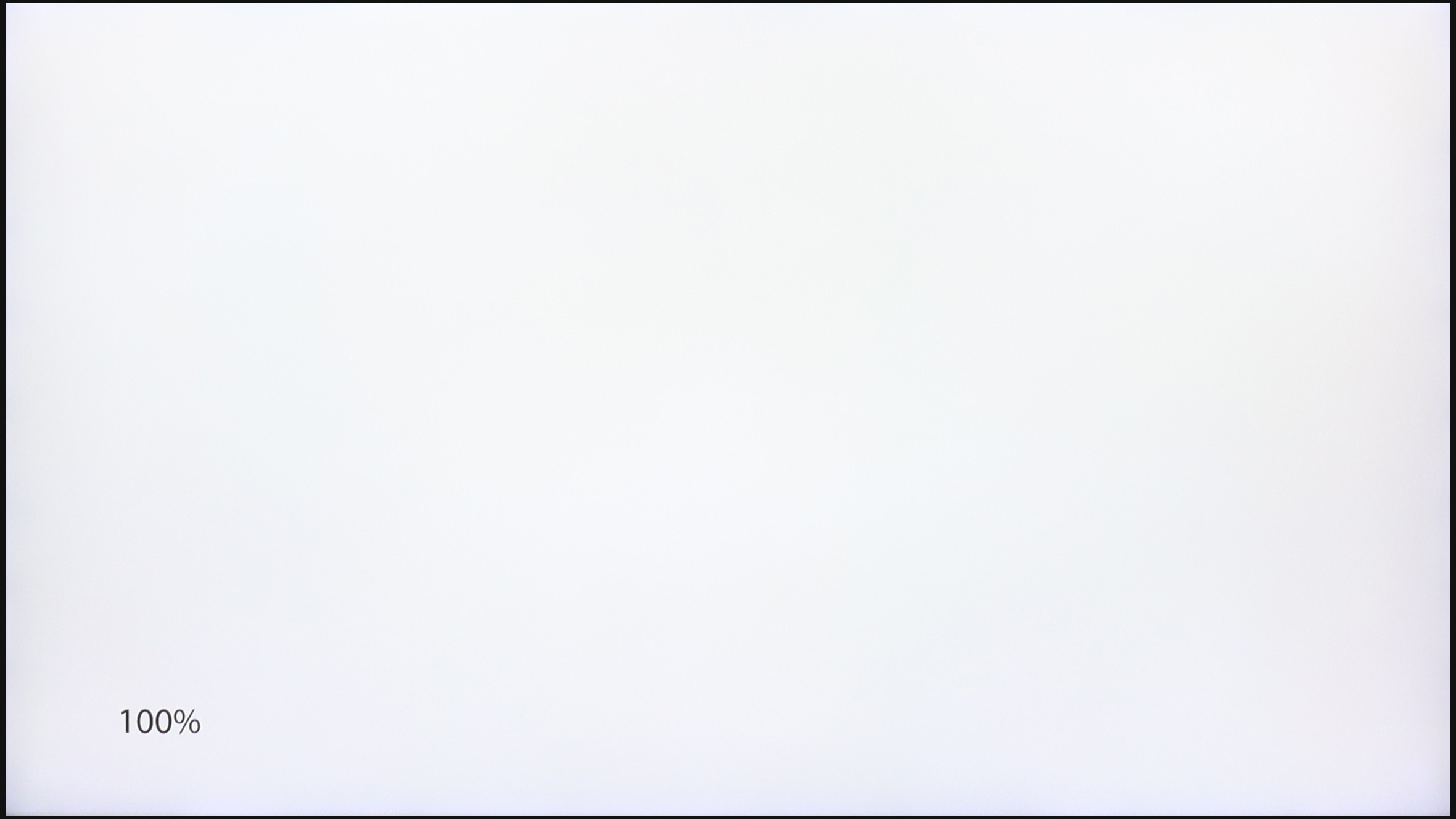
LG 55 B4
Samsung The Frame 2025 (LS03F)
TV features
9/10
8.1/10
- HDMI inputs0 x HDMI 2.0, 4 x HDMI 2.1 48Gbps3 x HDMI 2.0, 1 x HDMI 2.1 40Gbps
- OutputsToslink (Optical audio), eARC (HDMI), ARC (HDMI)Toslink (Optical audio), eARC (HDMI), ARC (HDMI)
- Network InterfacesWi-Fi 2.4GHz, Wi-Fi 5GHz, Ethernet (LAN) 100MbpsWi-Fi 2.4GHz, Wi-Fi 5GHz
- TV receptionDVB-T, DVB-T2, DVB-S, DVB-S2, DVB-CDVB-T, DVB-T2, DVB-S, DVB-S2, DVB-C
Classic features:
- Recording to USB (terrestrial TV)
- Recording programming
- Picture in Picture (PiP)
- RF remote control (no need to aim at the screen)
- Backlit remote control
- Teletext
- Audio only mode
- Possibility to connect Bluetooth headphones to the TV
- Possibility to simultaneously use Bluetooth headphones and the TV speaker
Smart features:
- AirPlay
- Screen mirroring (Windows Miracast)
- Wyszukiwanie głosowe
- Voice search in native language
- Ability to connect a keyboard and mouse


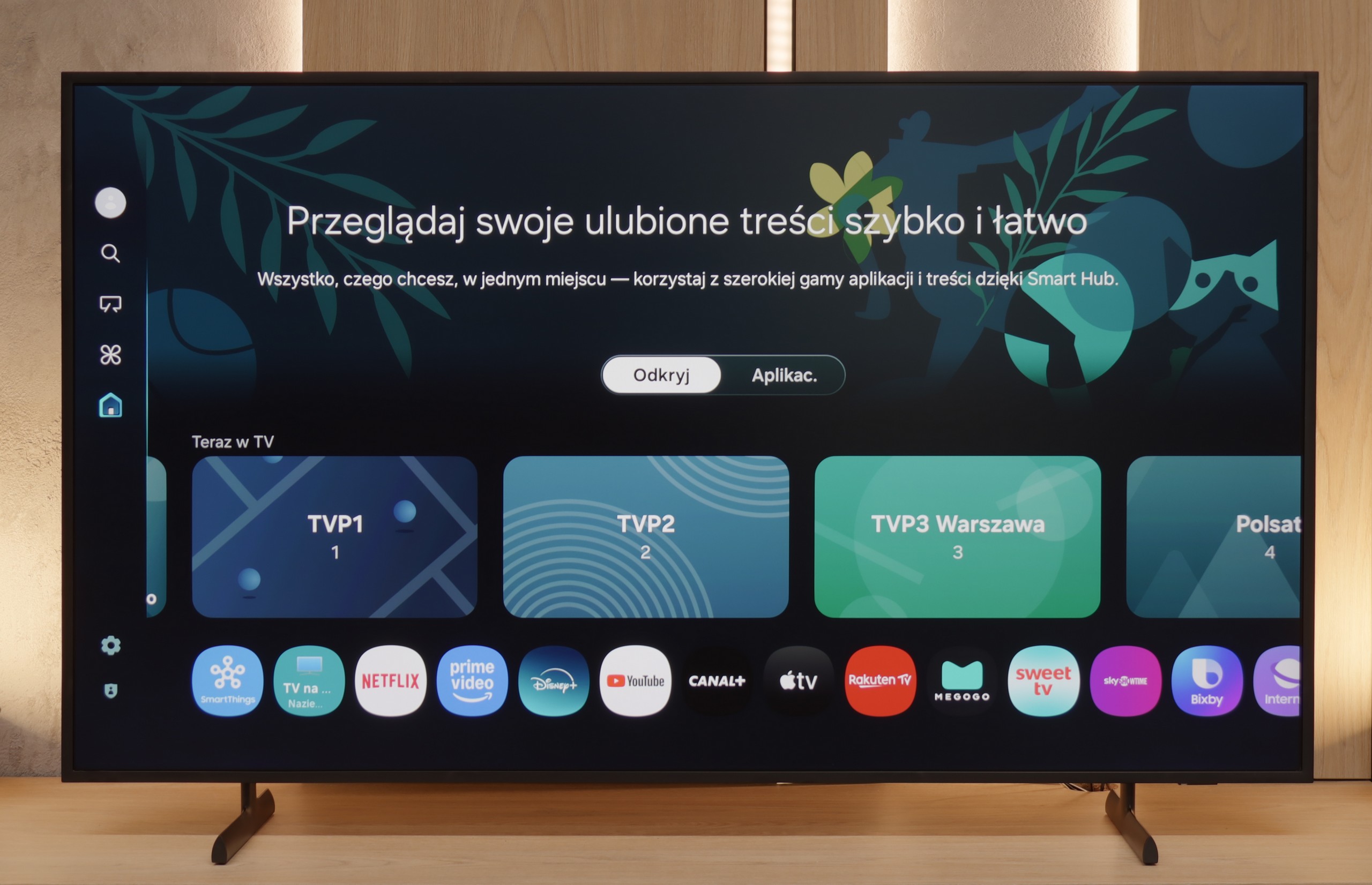
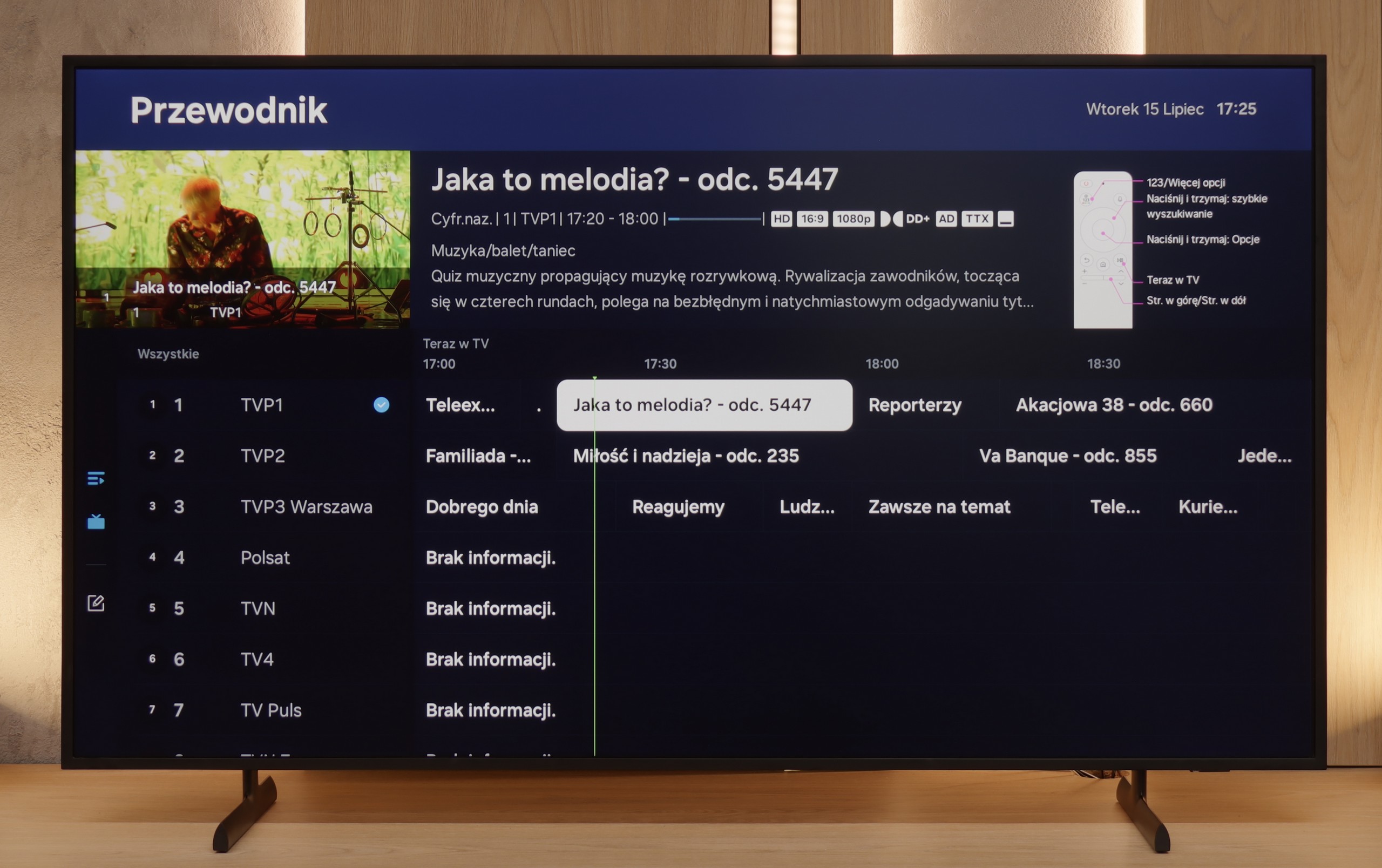

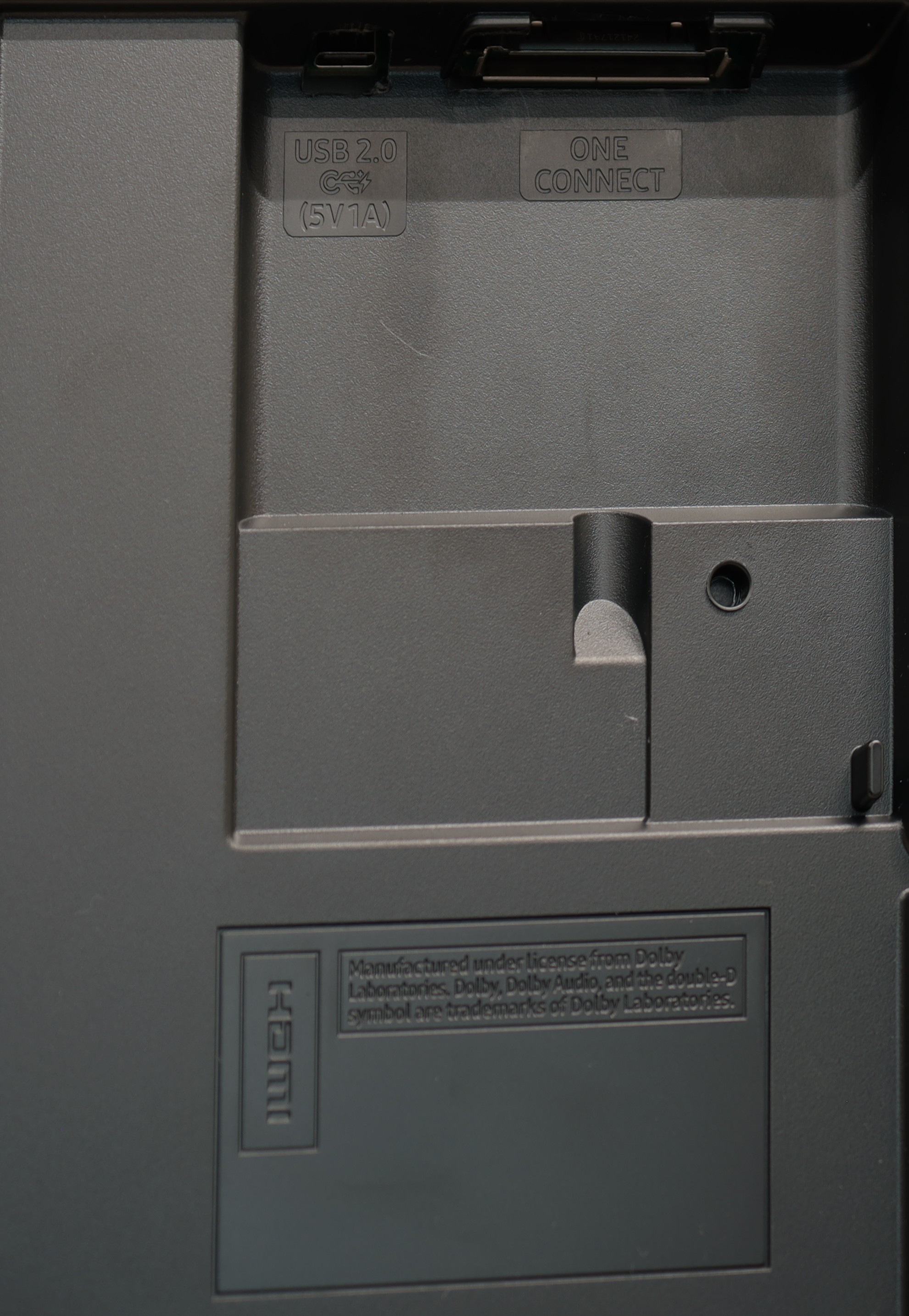
LG B4 uses the well-known proprietary system WebOS. The system offers practically all the most important applications, and those that are lacking can be counted on one hand, such as CDA or KODI.
WebOS also boasts a highly appreciated ability to perform operations using a cursor that appears when the remote control is moved. The convenience of such a feature is invaluable when entering queries or passwords for portals. WebOS, like most systems, also supports functions such as screen mirroring, AirPlay, voice search in Polish, and the capability to connect headphones via Bluetooth. On a more practical note, WebOS allows us to use both headphones and the television speaker simultaneously, which will certainly be a great help for those with hearing impairments. Among the more interesting features, particularly appreciated by sports fans, is the option to enable an alert for upcoming matches, ensuring that we never miss a broadcast. The home panel also deserves praise for allowing control of all smart devices connected to the home network. For example, the end of a washing cycle will be signalled by a notification in the top right corner.
In summary, the WebOS system, despite being less known and having certain limitations compared to Android TV, offers stable and fast operation and supports most functions that users may need. It is a solid solution for those looking for a simple and effective operating system in a television.
Classic Television Features
In terms of classic features, The Frame does not stand out particularly from the competition. There are no options for recording to USB or PiP (picture-in-picture) functionality, which may be disappointing for some users. On the other hand, the television allows for simultaneous use of speakers and headphones, which can be useful – especially for older users. The EPG, or electronic programme guide, is quite readable, and despite the lack of conventional buttons on the remote, we were able to access teletext. In everyday use, the basic functions operate smoothly and without significant complaints.
Smart System – Tizen and Applications
The Frame 2025 runs on the Tizen system, which has long been regarded as one of the most refined Smart TV solutions on the market. This system is designed with the idea that devices are more than just a television – and it has been constructed with that spirit in mind. Tizen offers full integration with external devices – supporting both Apple AirPlay and Miracast. With the SmartThings app, it is possible to control not only the television but also other devices within the smart home framework. Since last year, Samsung has also been developing its own voice assistant with support for the Polish language, which significantly facilitates operation. However, the greatest strength of the Smart system in The Frame remains the Art Gallery application. Although access to it is paid (in the form of a subscription), it offers the best scans of works of art available on the market – referring to scans, not ordinary photographs. As a result, the effect of a digital painting hanging on the wall is markedly better than in any other lifestyle television.
Playing files from USB
8.5/10
8.5/10
Supported photo formats:
Maximum photo resolution:


The default file player in LG B4 definitely handles most images well, although the absence of a few equally popular formats is surprising. We can successfully play videos recorded in virtually all the most popular formats, including Dolby Vision. The only codec that LG B4 will not play is H.266 VVC, although this is currently rather unused. However, it is worth noting the supported image formats, of which there are only two: JPEG and PNG. Users of Apple devices may feel disappointed by the lack of support for the HEIC format, which is the default format when taking photos. The remedy for this is to use the built-in AirPlay feature. We will also mention the lack of support for TXT subtitles.
During testing, we did not notice any major issues with playing files from a USB memory stick. The television handled both video materials and photos well. Of course, there are some exceptions – for example, a lack of support for the HEIC format (used by Apple devices) – but it is difficult to consider this surprising. One positive aspect is the full support for high-resolution photos – the television displays files with a high number of megapixels without any problems, which may be particularly significant for those looking to treat The Frame as a digital frame as well. However, during testing, we noticed a limitation regarding subtitles – the television only correctly handled files in .txt format. It is worth keeping this in mind and ensuring that the downloaded subtitles for films are saved in this format; otherwise, they may simply not display.
Apps
8.7/10
8.7/10














































Sound
7.1/10
6/10
- Subjective sound quality:7.1/106/10
- Dolby Digital Plus 7.1:
- Dolby True HD 7.1:
- Dolby Atmos in Dolby Digital Plus (JOC):
- Dolby Atmos in Dolby True HD:
- DTS:X in DTS-HD MA:
- DTS-HD Master Audio:
The audio system built into the LG OLED B4 can be considered quite good. We can say that it performs well for its price range. The bass is quite noticeable, but does not overpower the other frequencies. It can be said that the sound is fairly well balanced. We believe that those opting for this class of display are, or will be, in possession of an appropriate audio system. Therefore, the presence of DTS-HD Master Audio and Dolby Atmos codecs is not insignificant.
For such a slim television, the sound is quite good. It is full, sufficient for everyday viewing, but without much excitement – typical for flat constructions. There is little bass, although at times it can be heard. The speakers in a 2.0.2 arrangement have a total power of 40 W (in the 55+ inch version). Unfortunately, the television does not support the DTS format, so for films with that sound, one has to rely on external equipment, such as a home cinema. A soundbar can be connected, and thanks to the Q-Symphony feature, the television plays along with it. Samsung also offers visually matched models for The Frame like S700D or S800D, but they are sold separately. (This shouldn’t surprise anyone😉).


